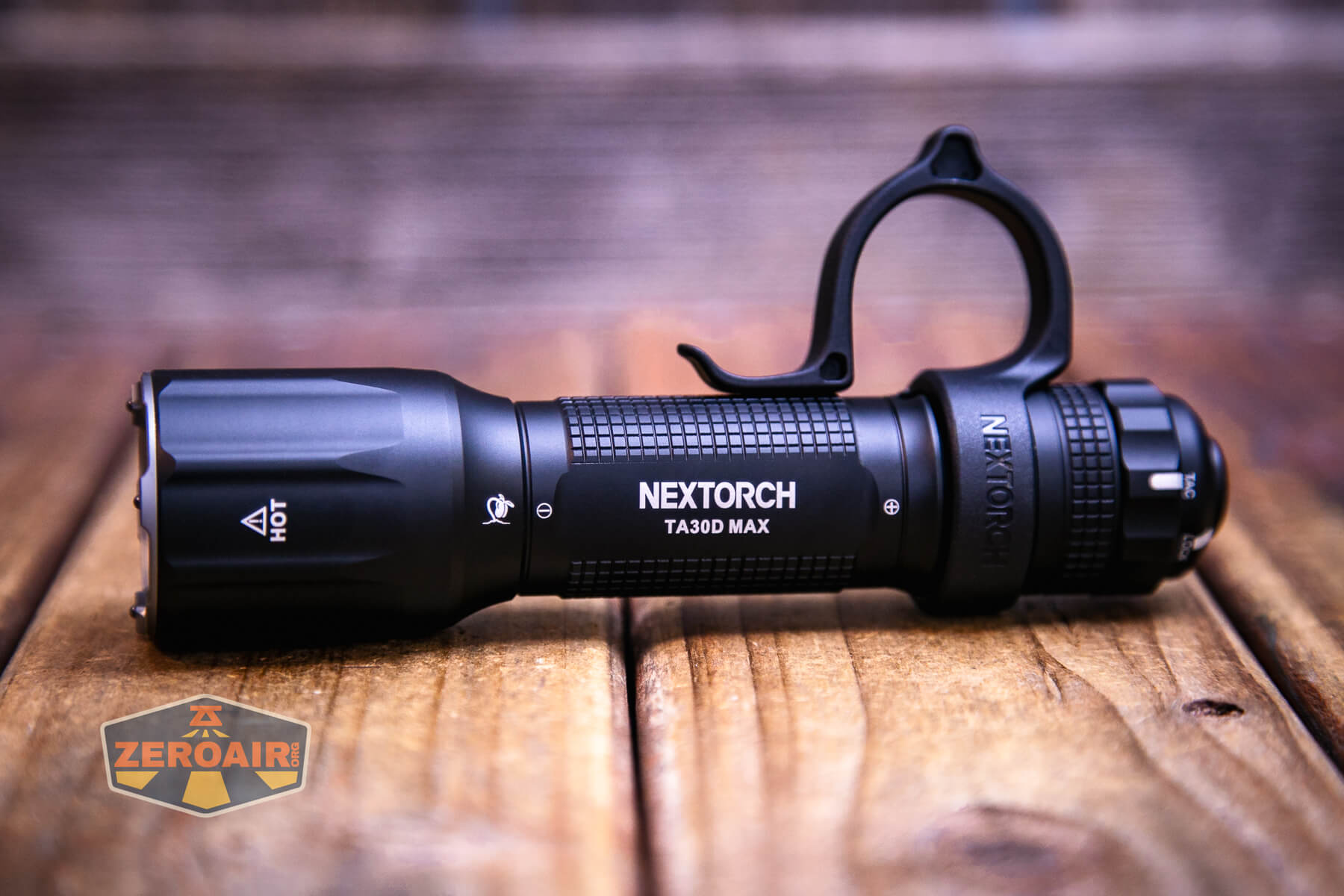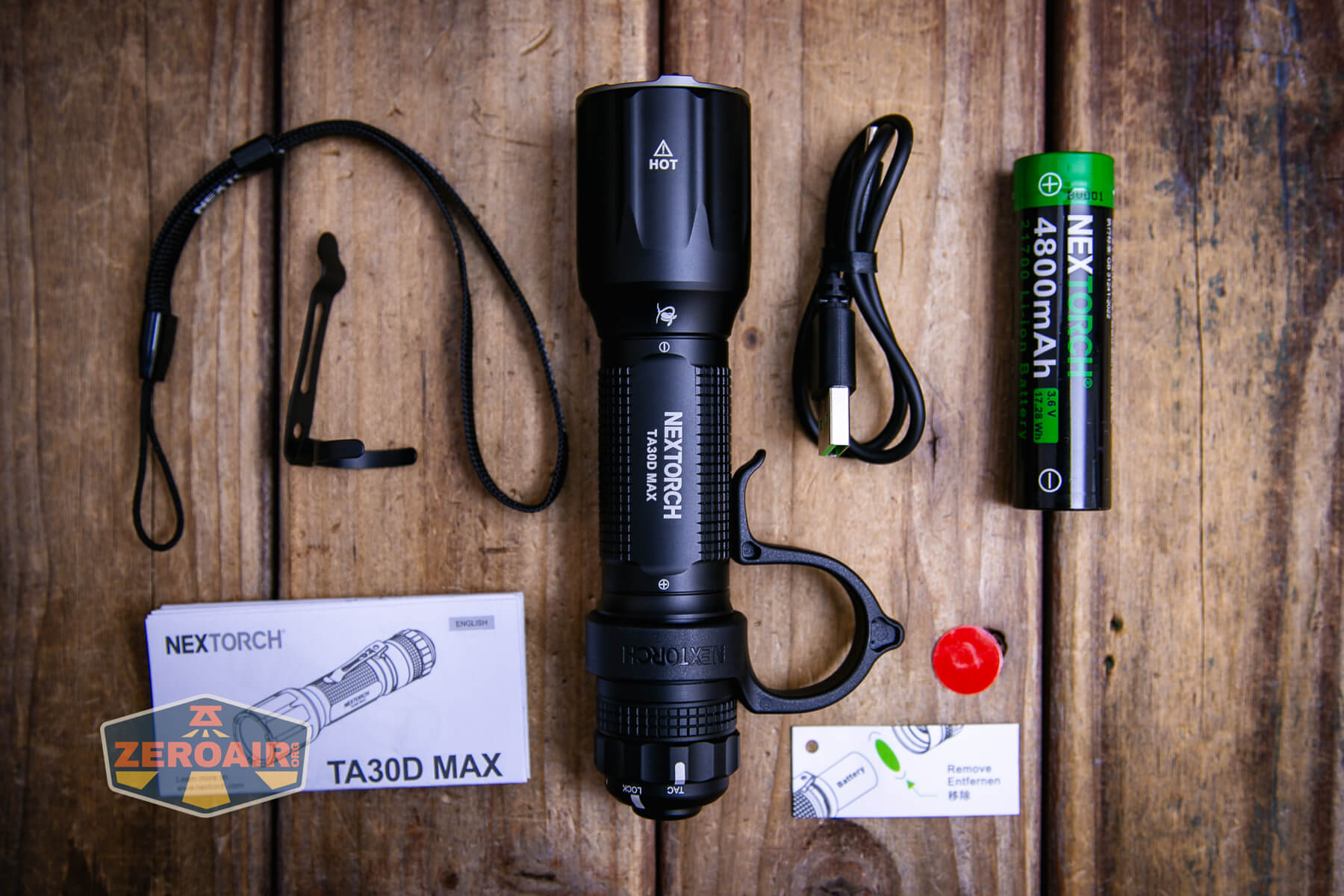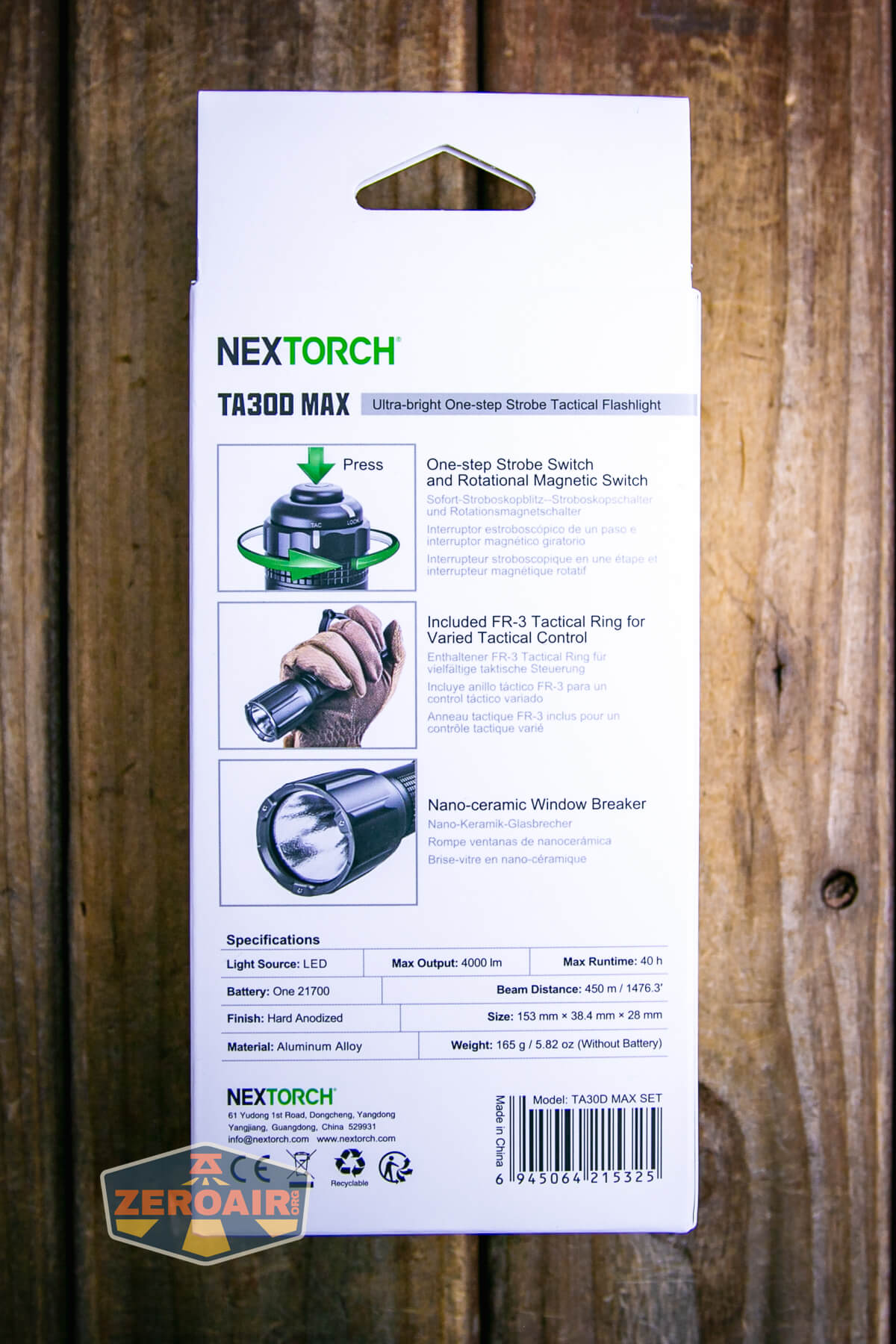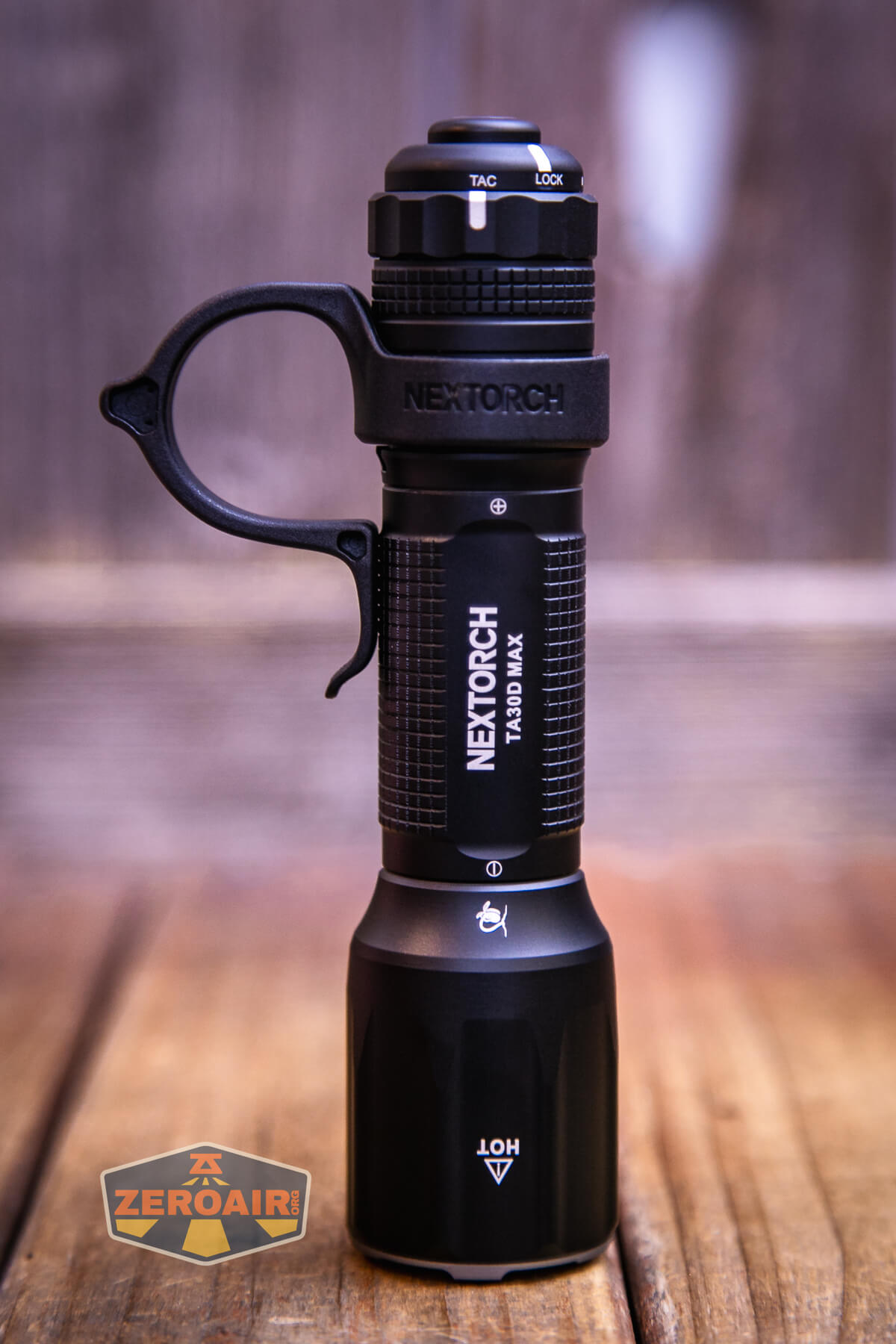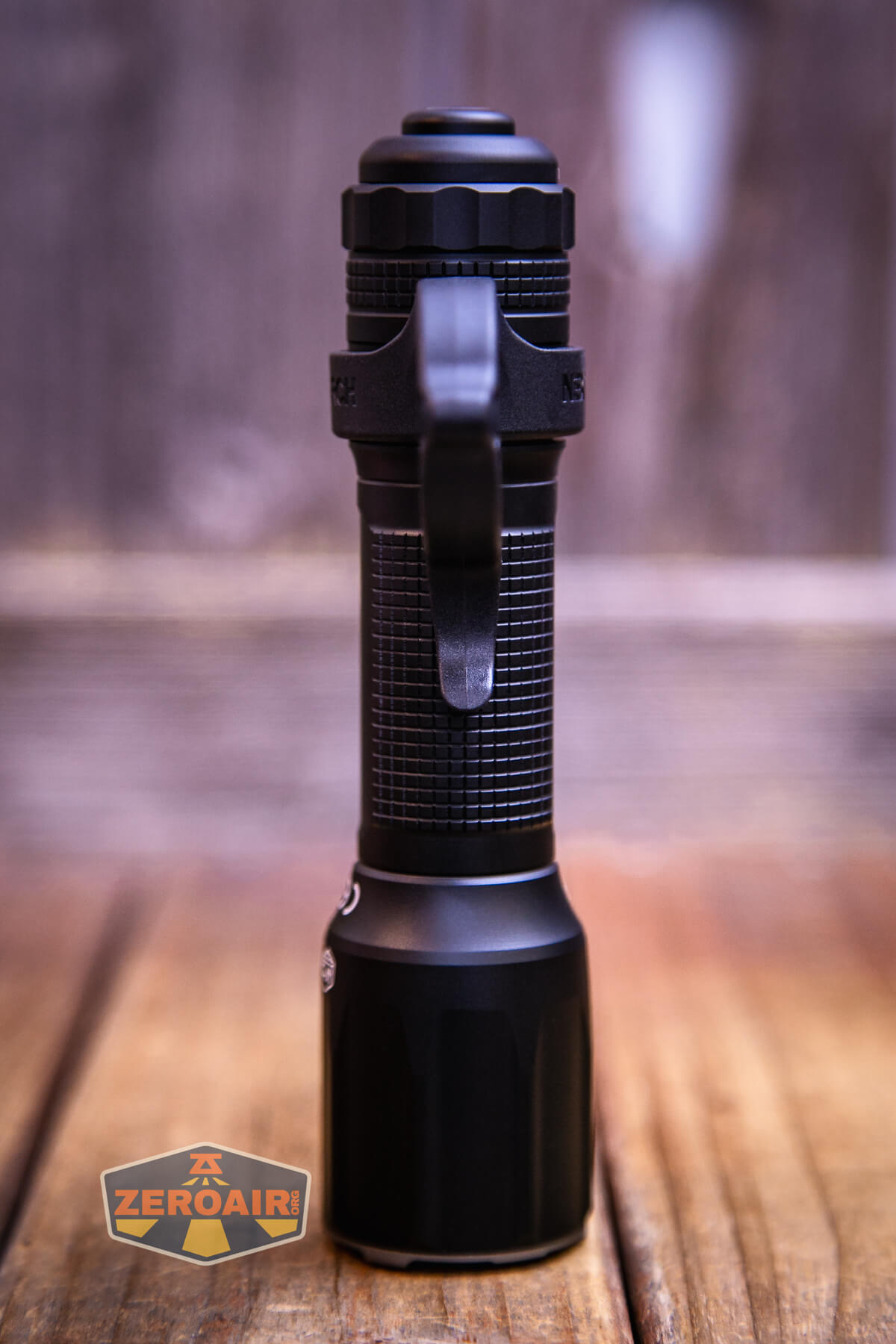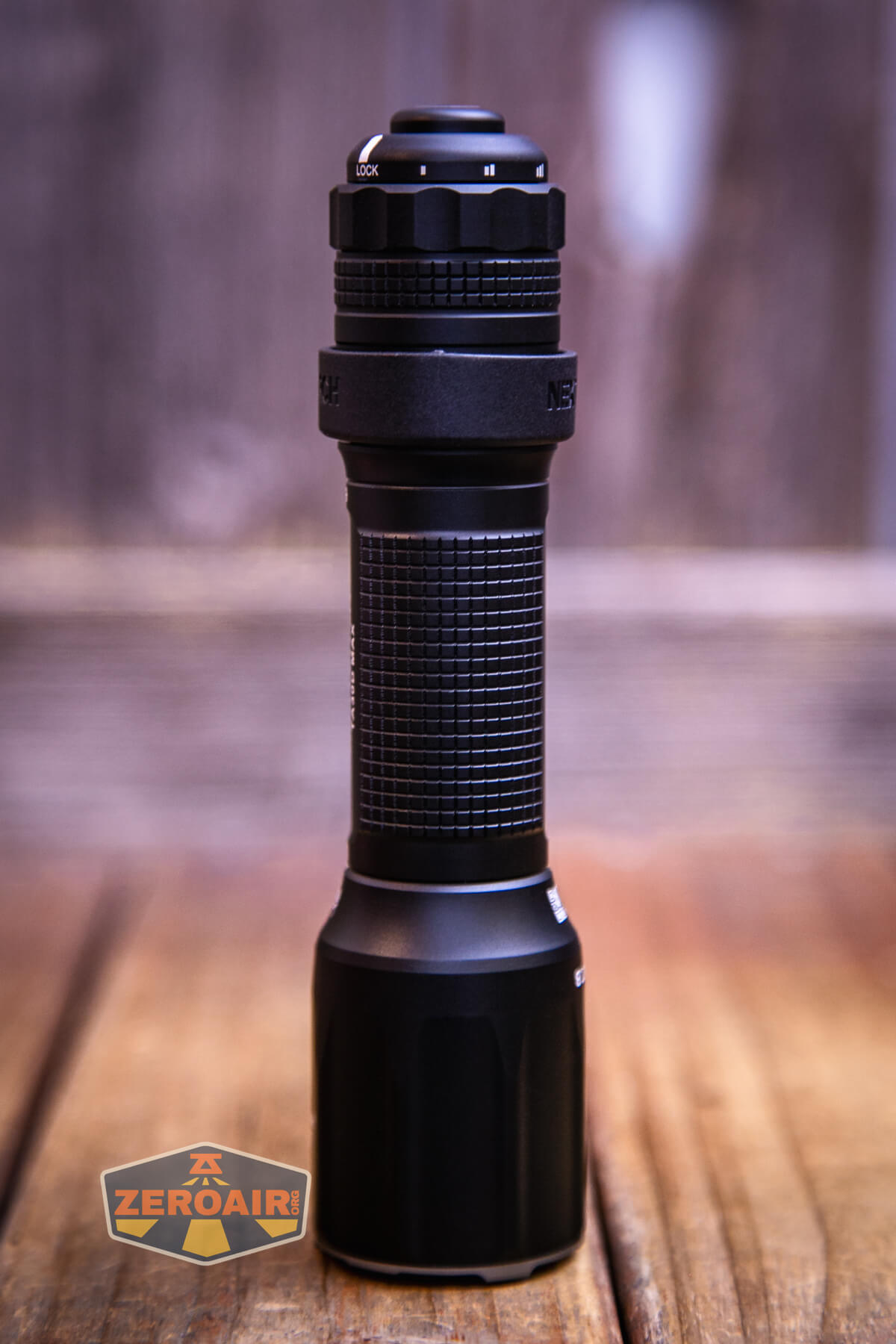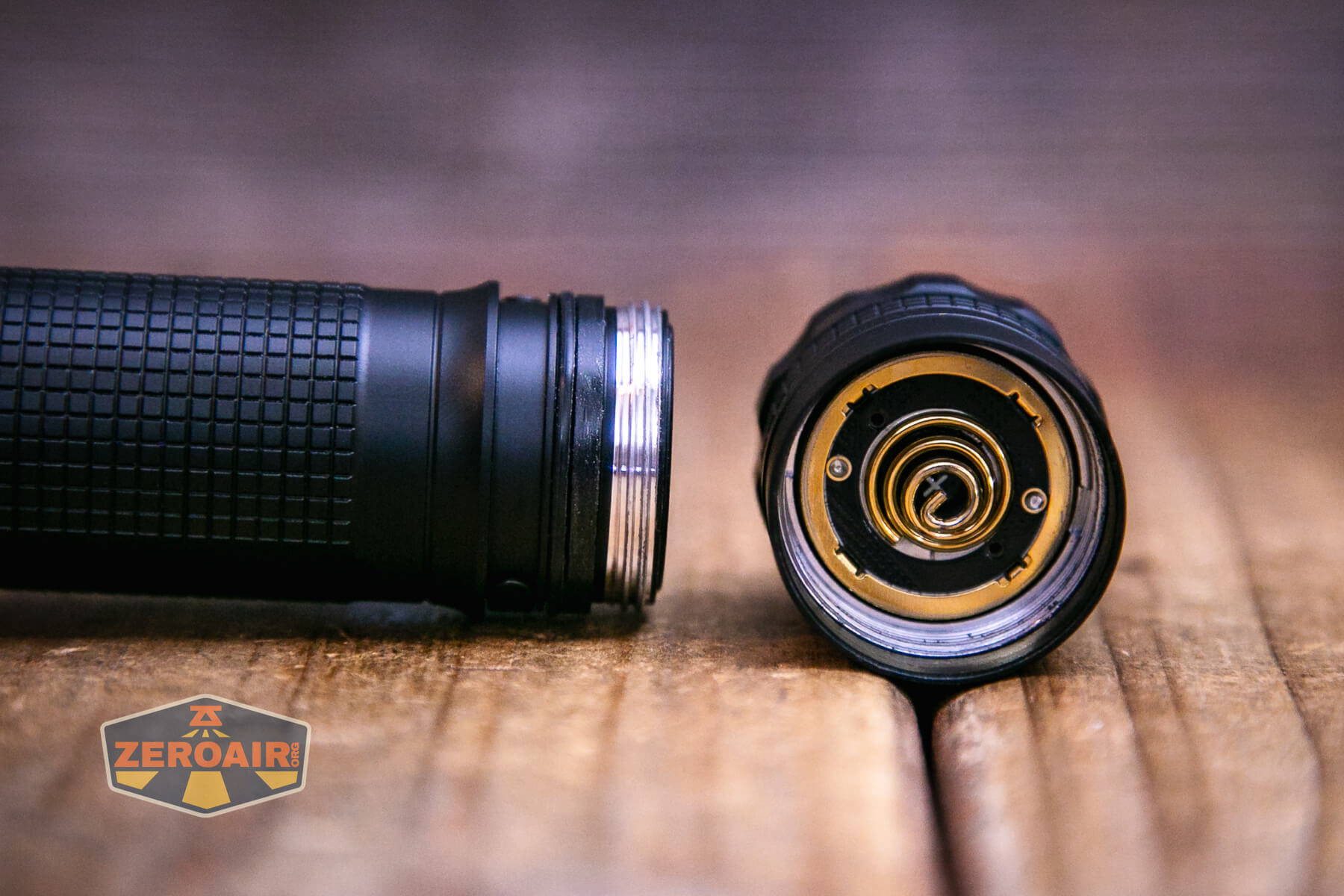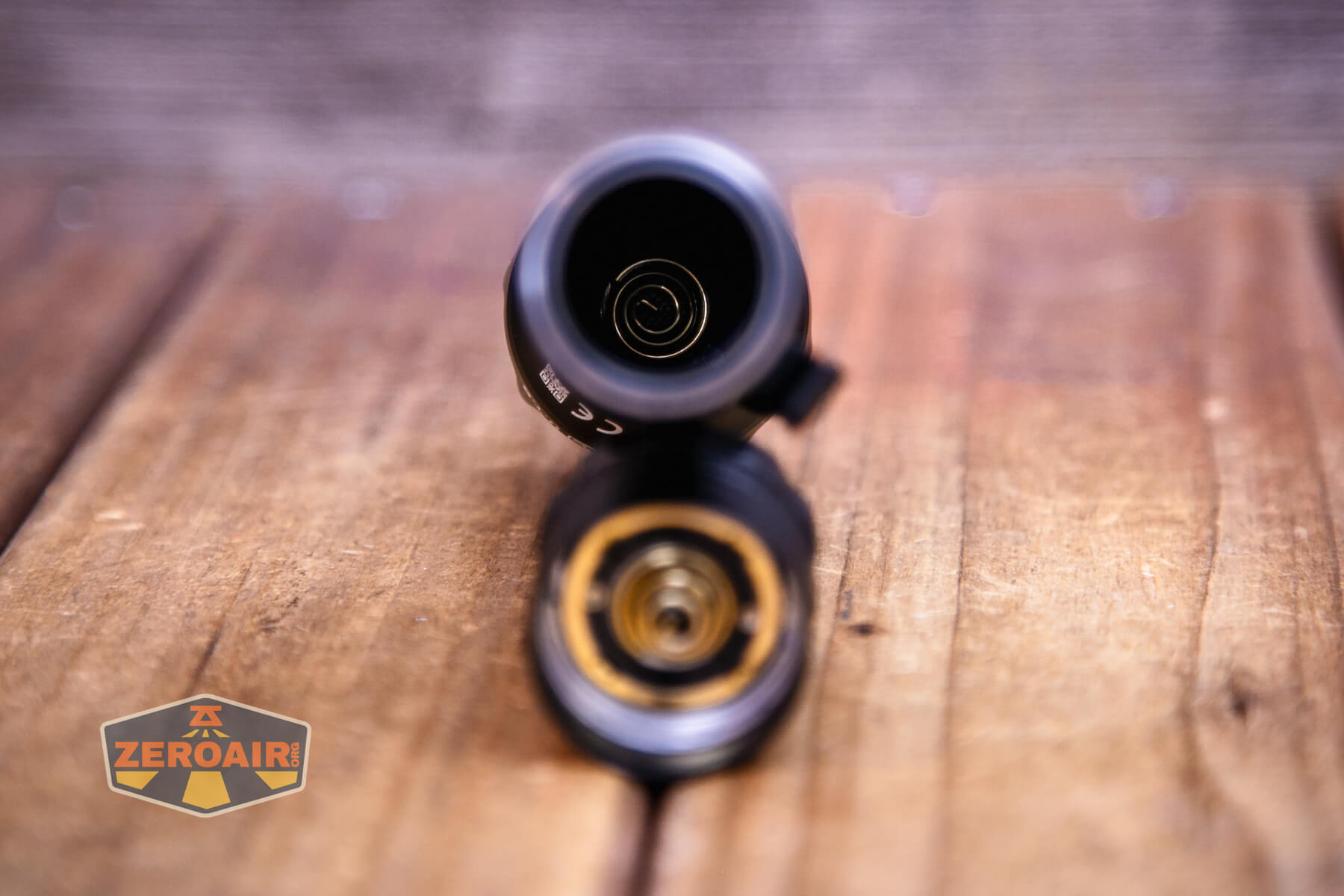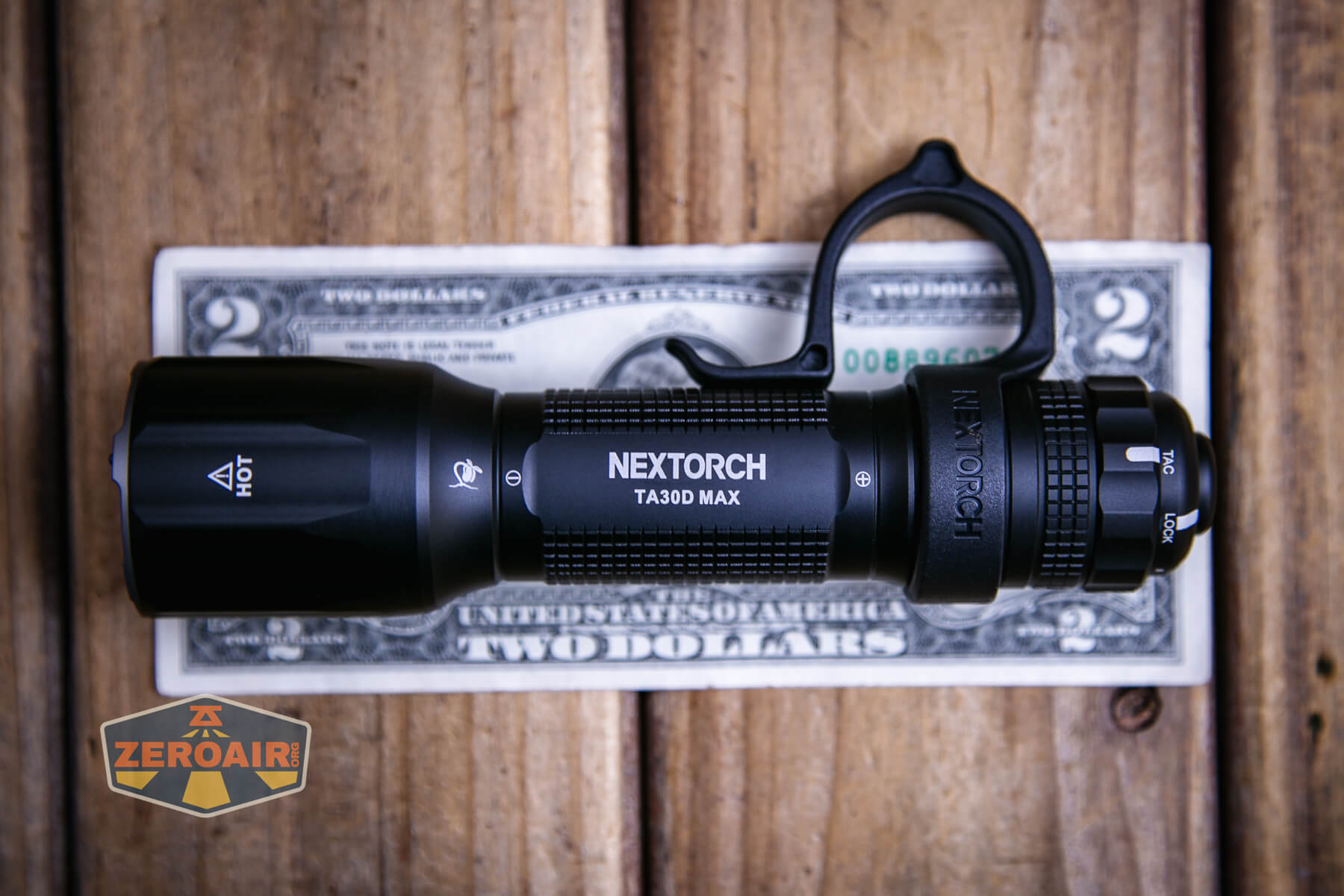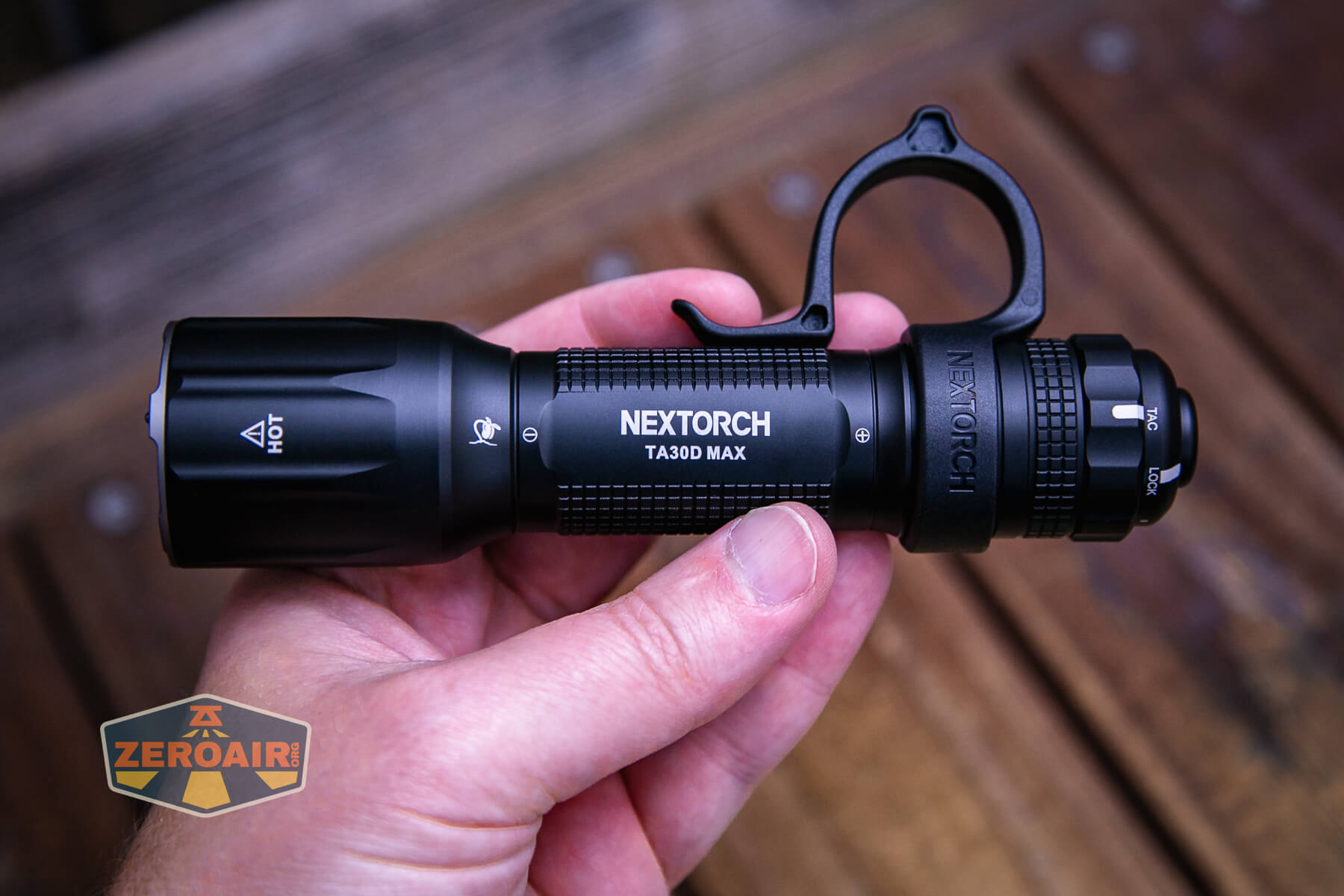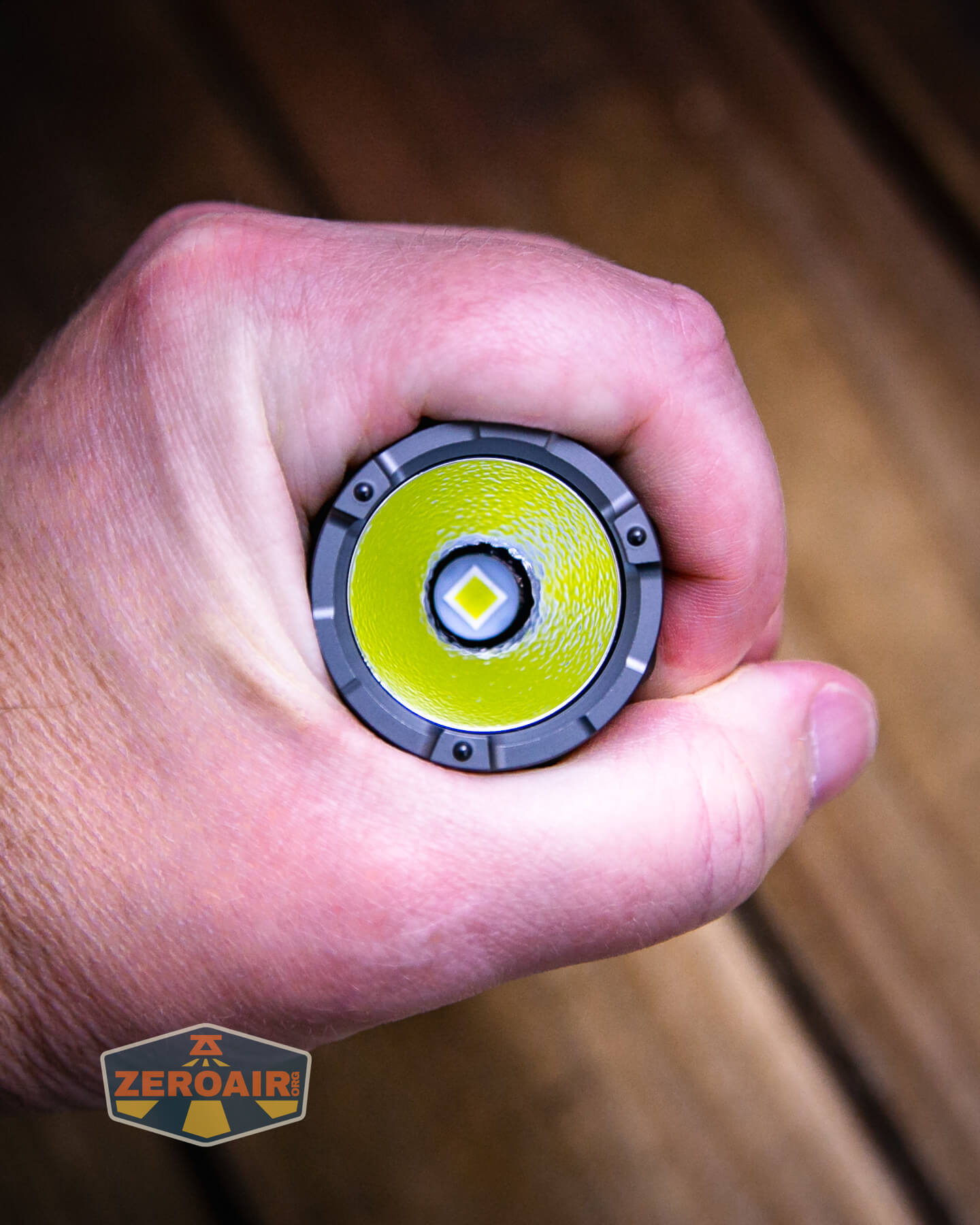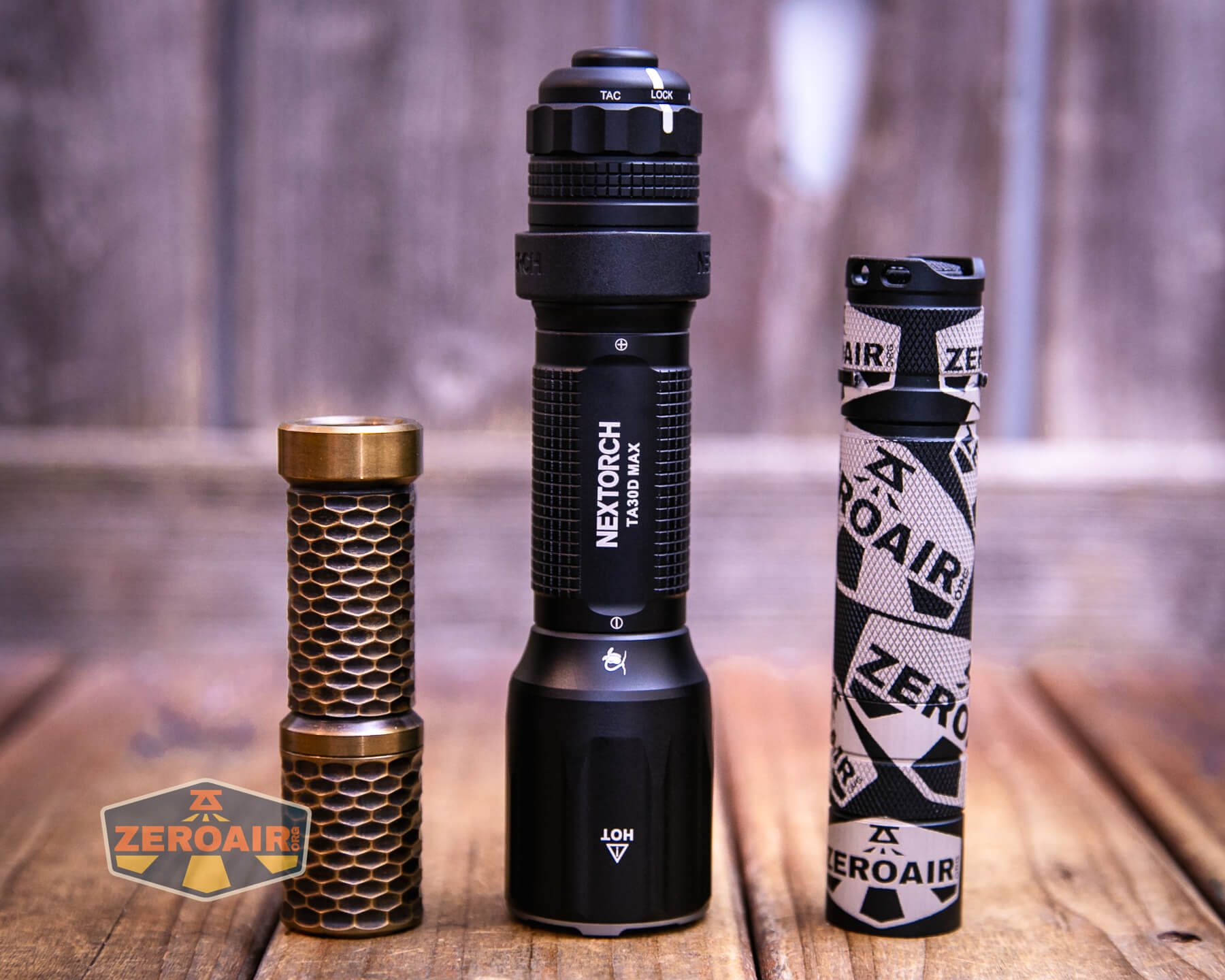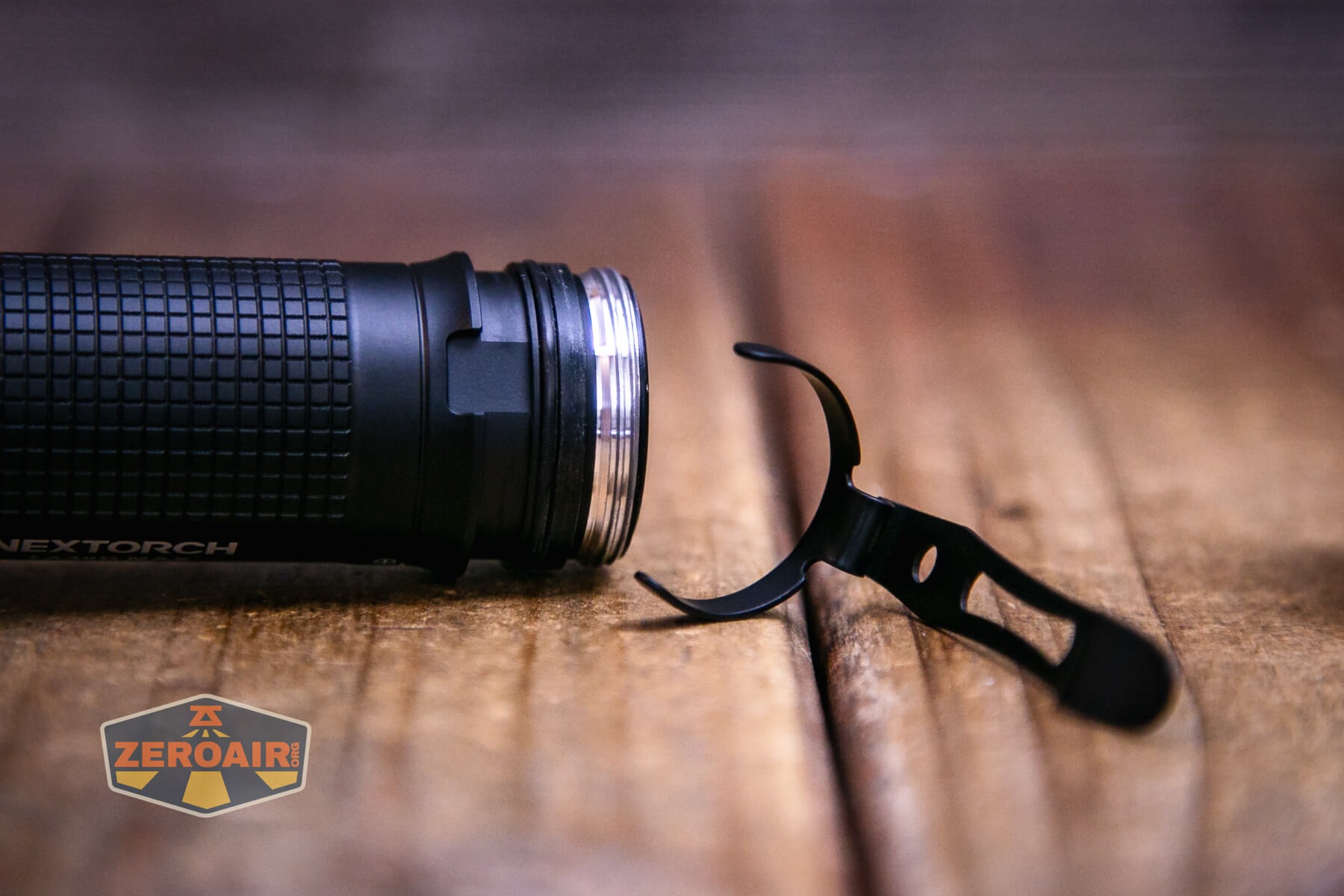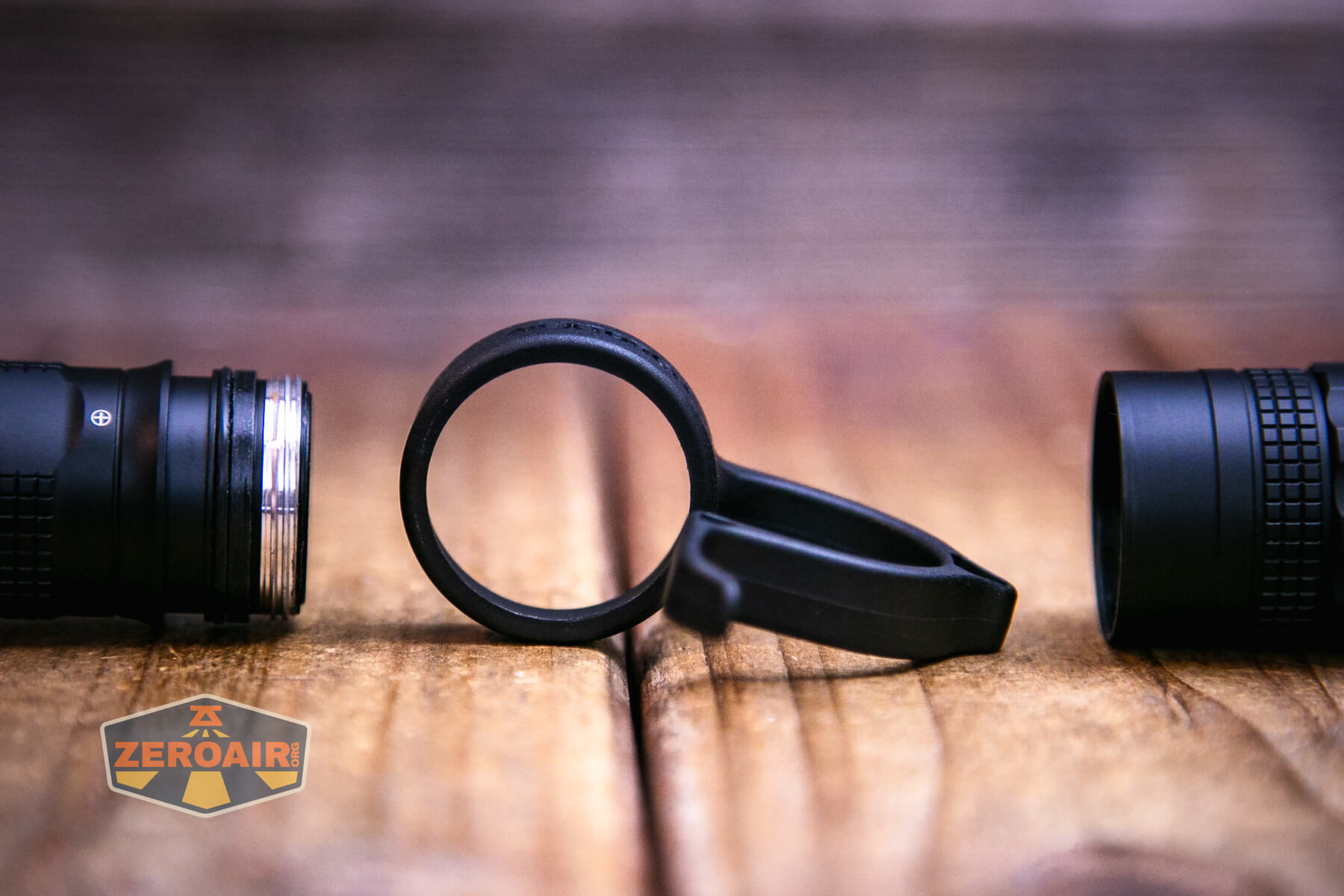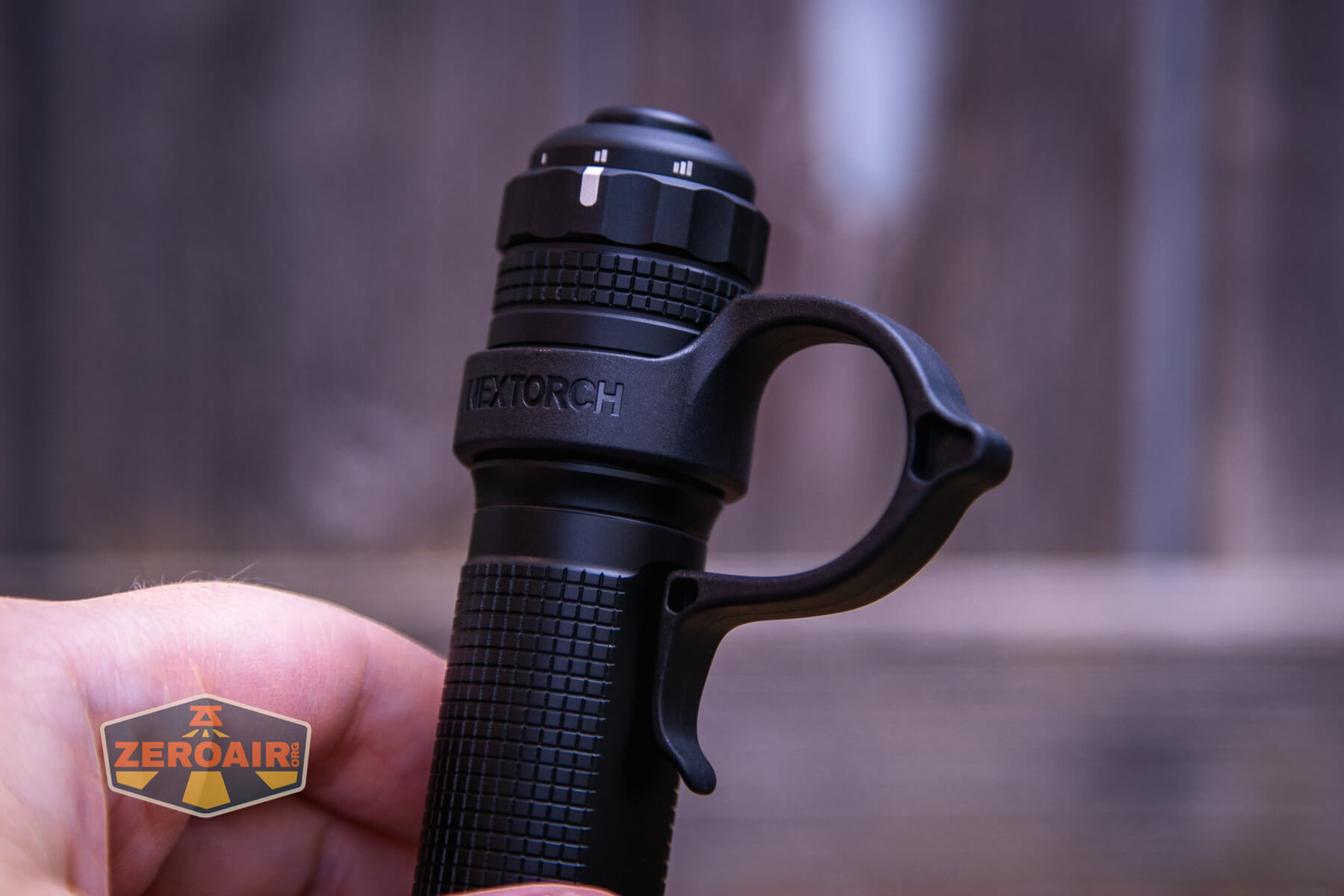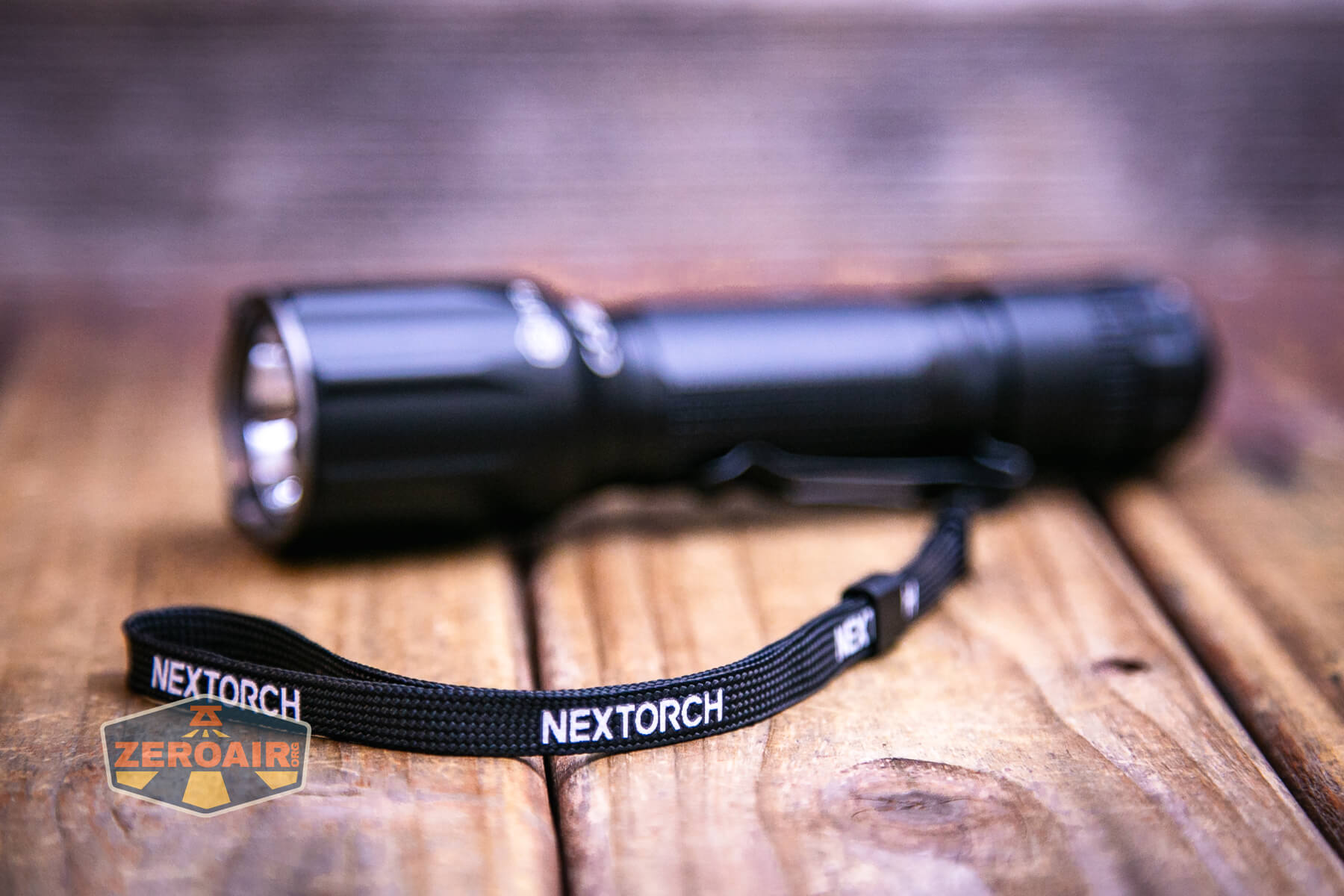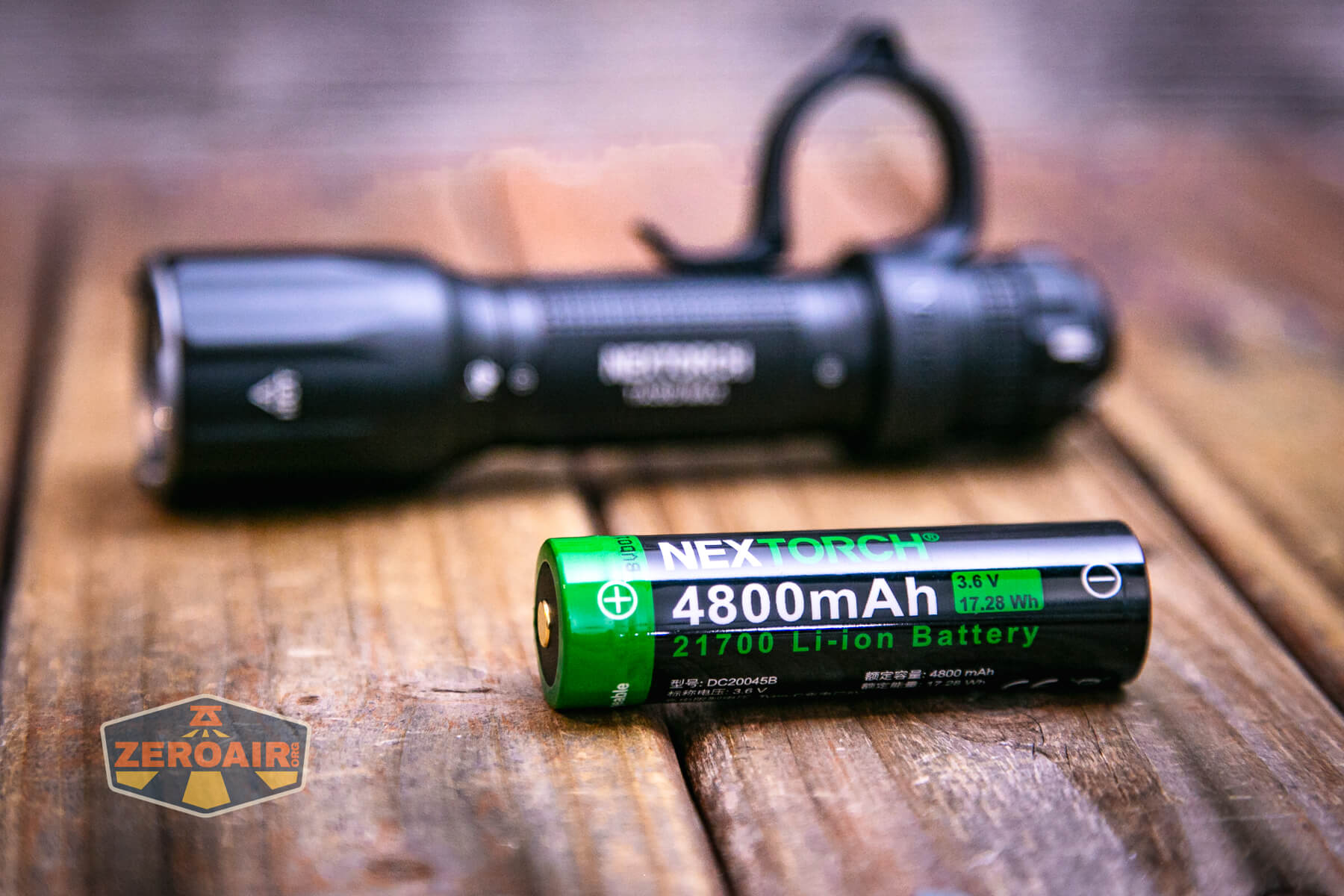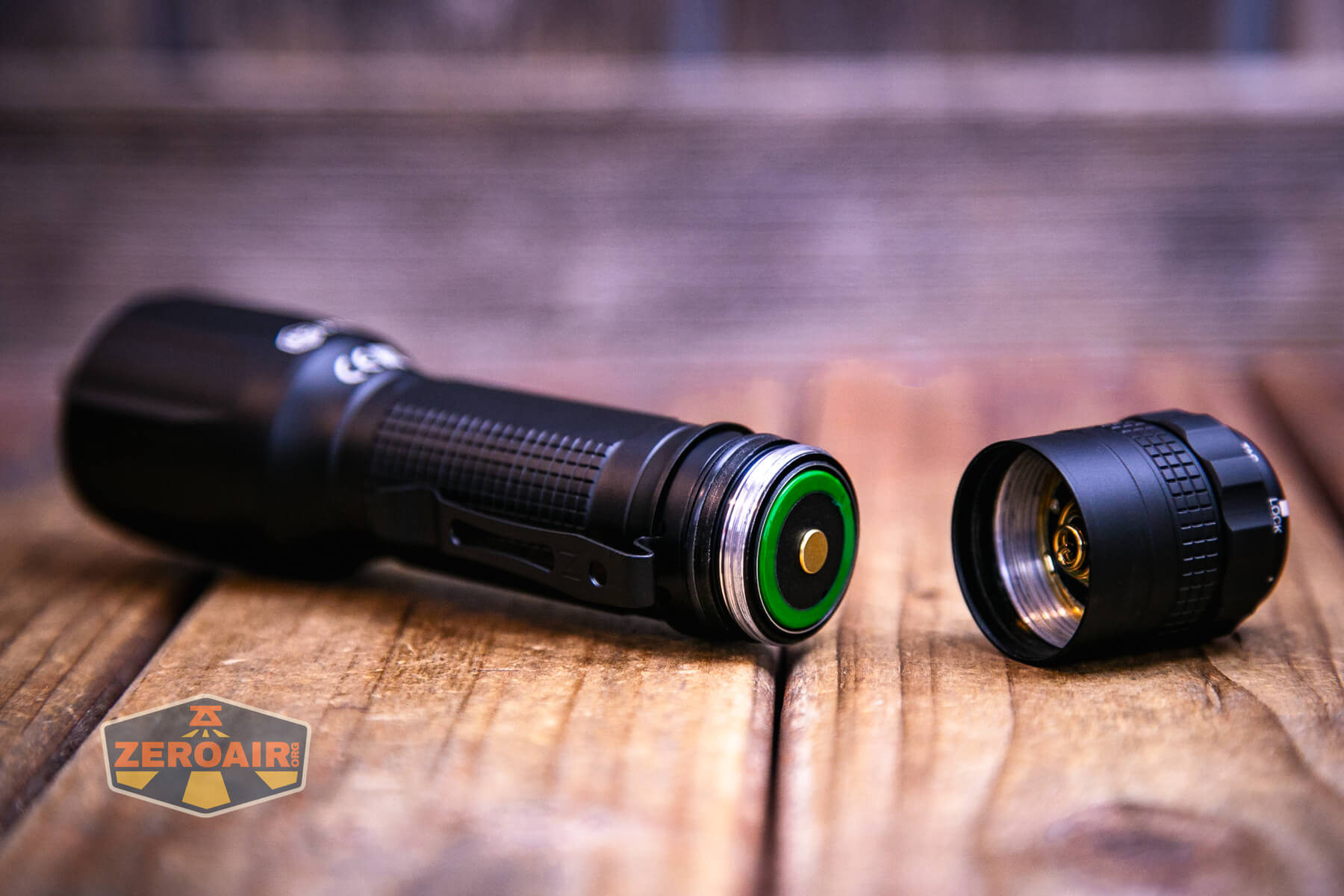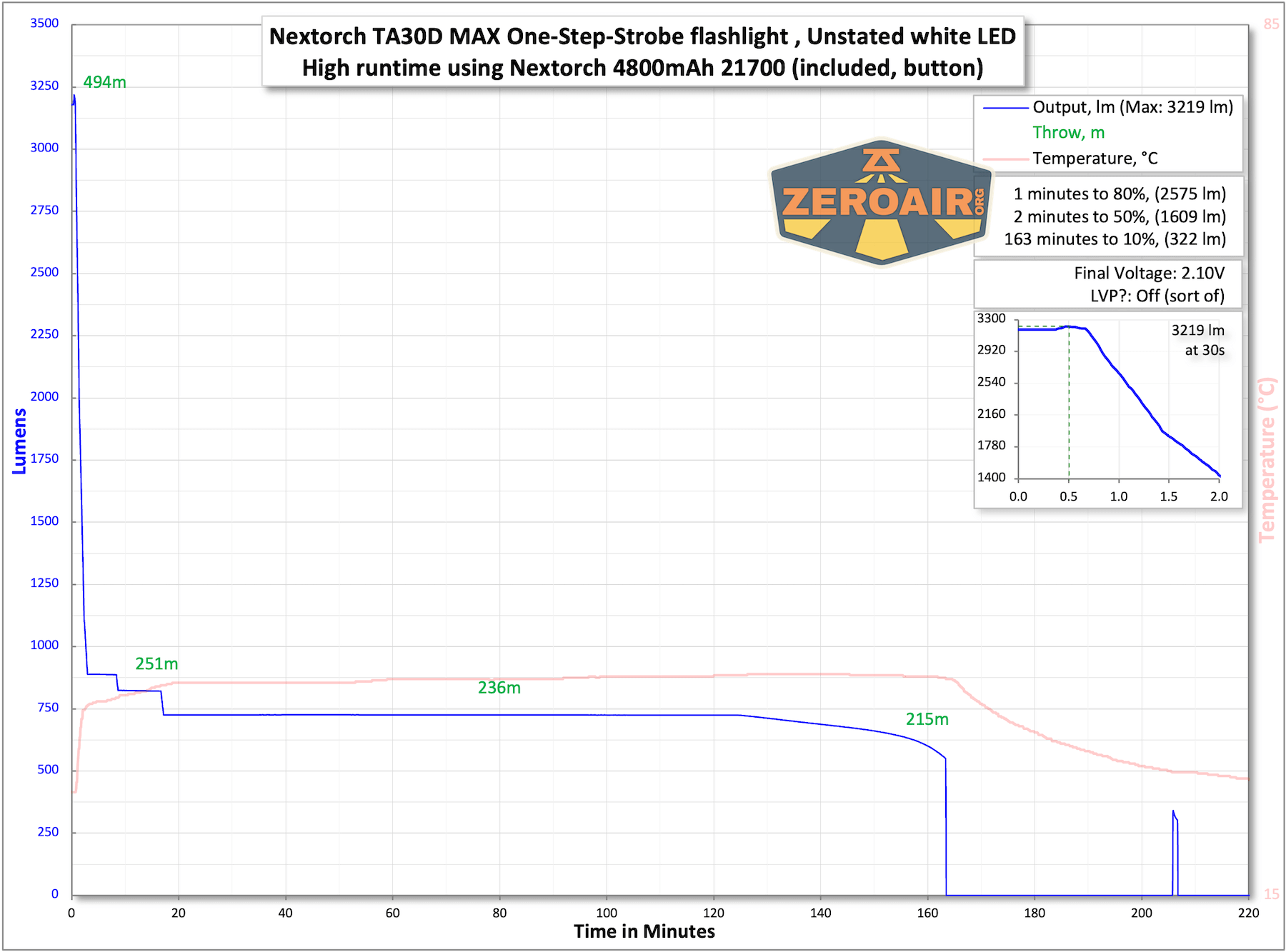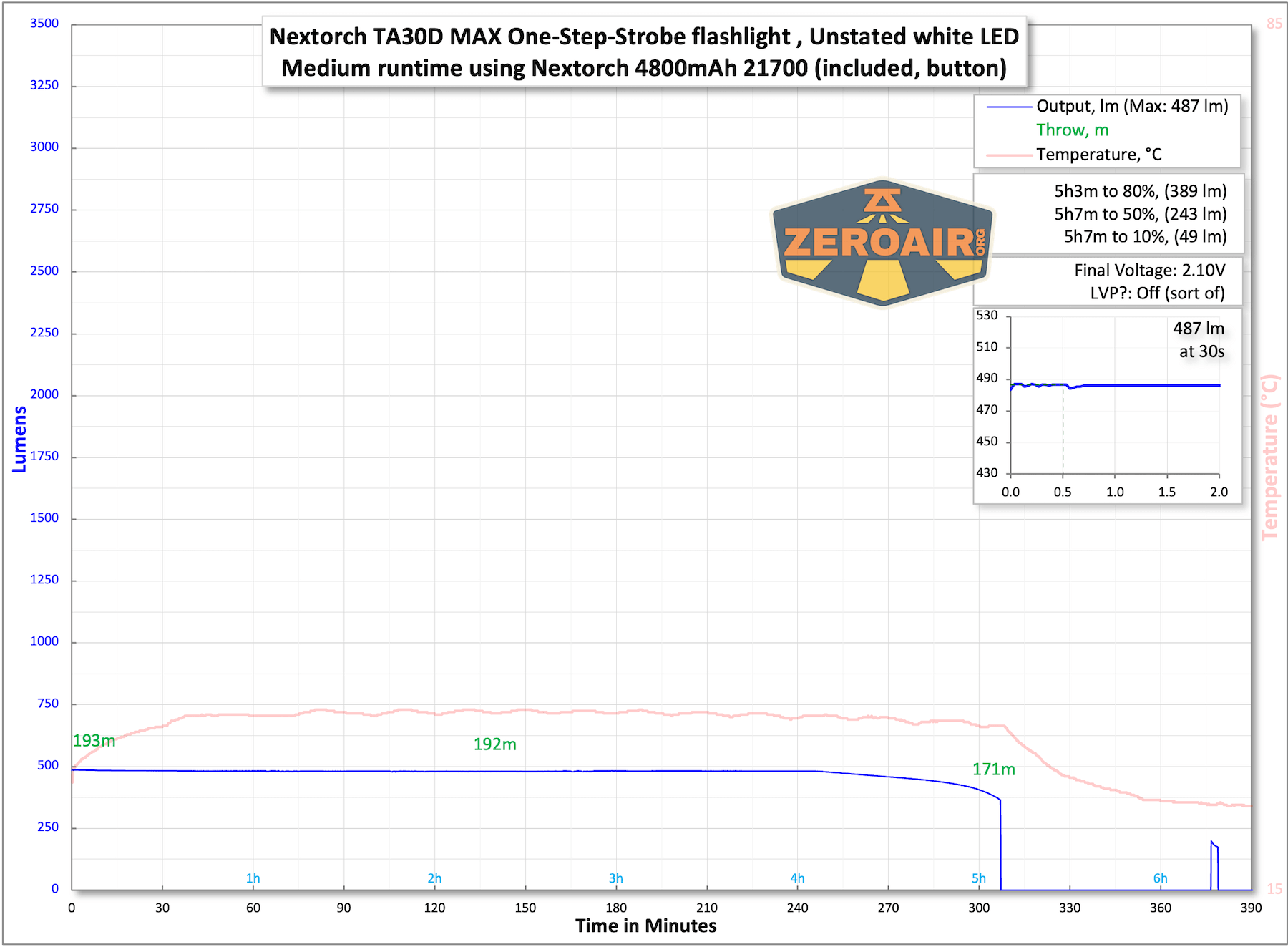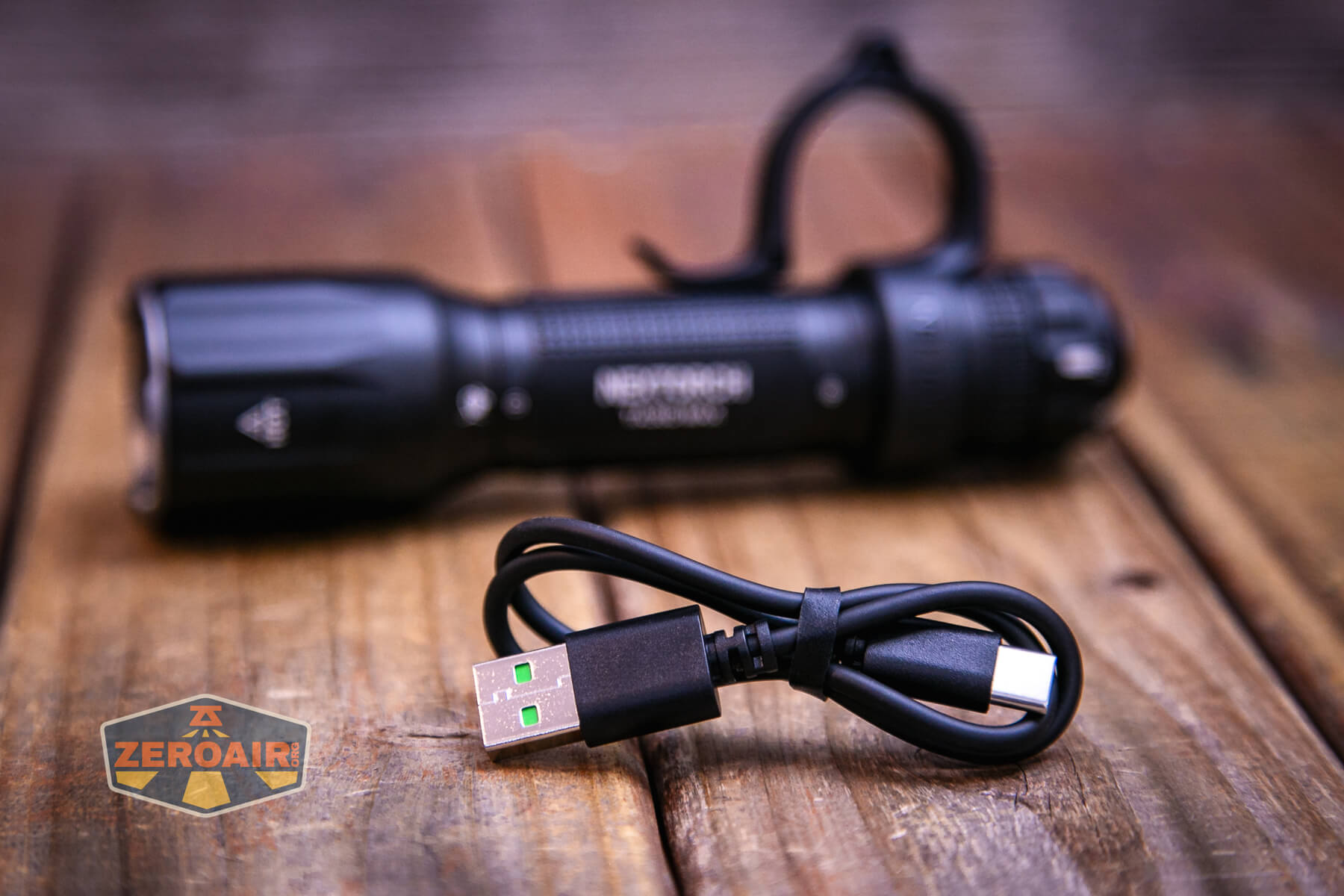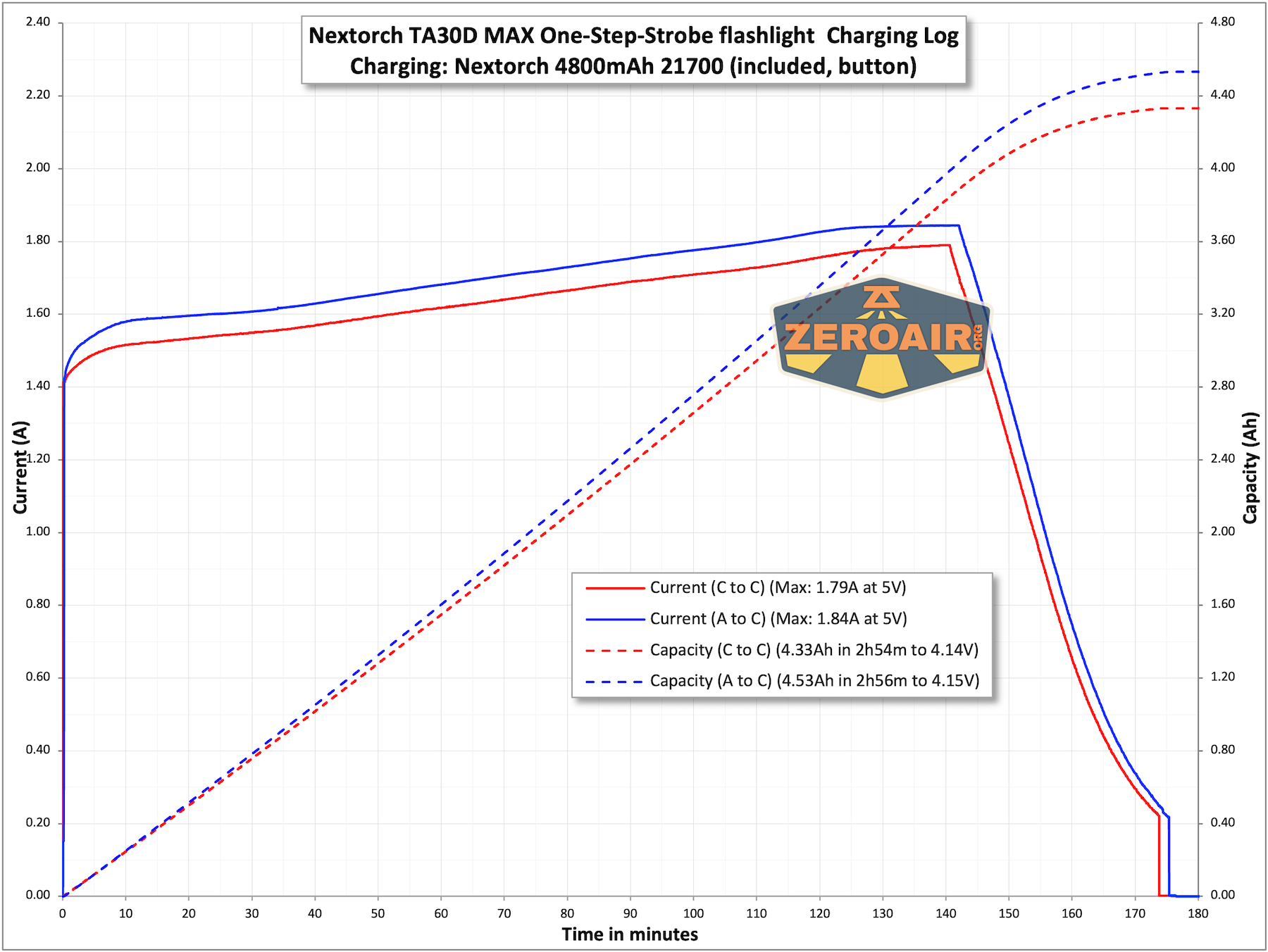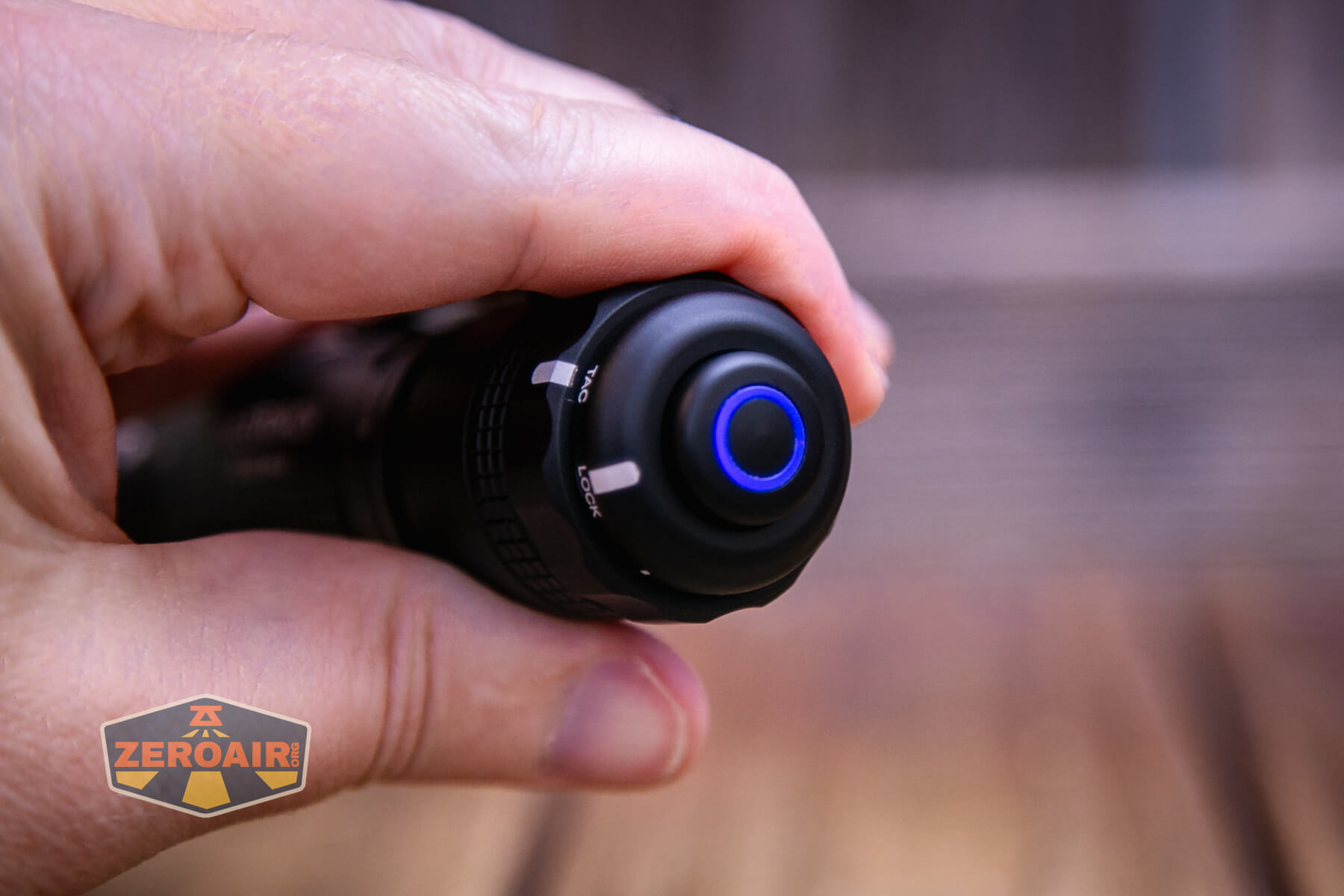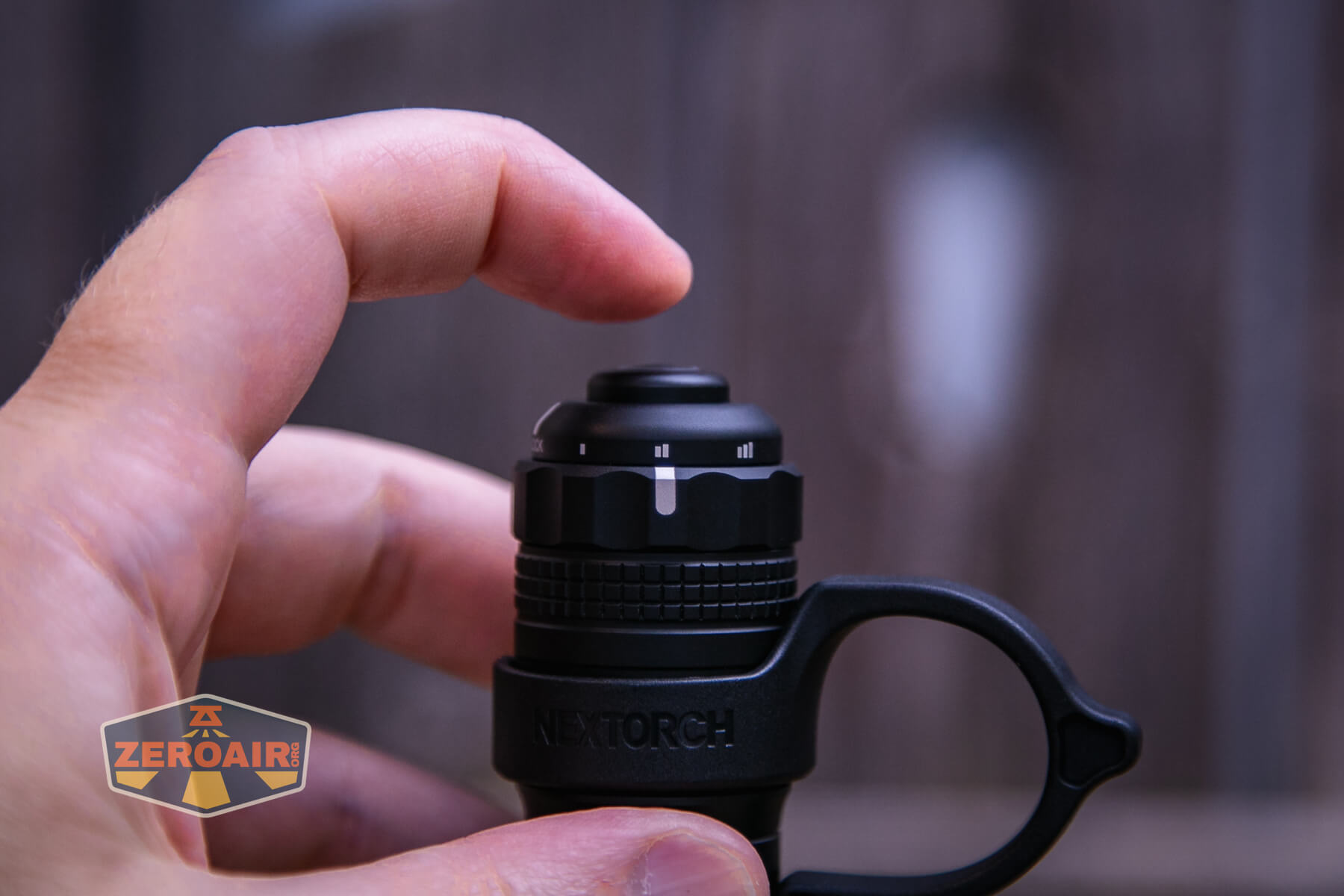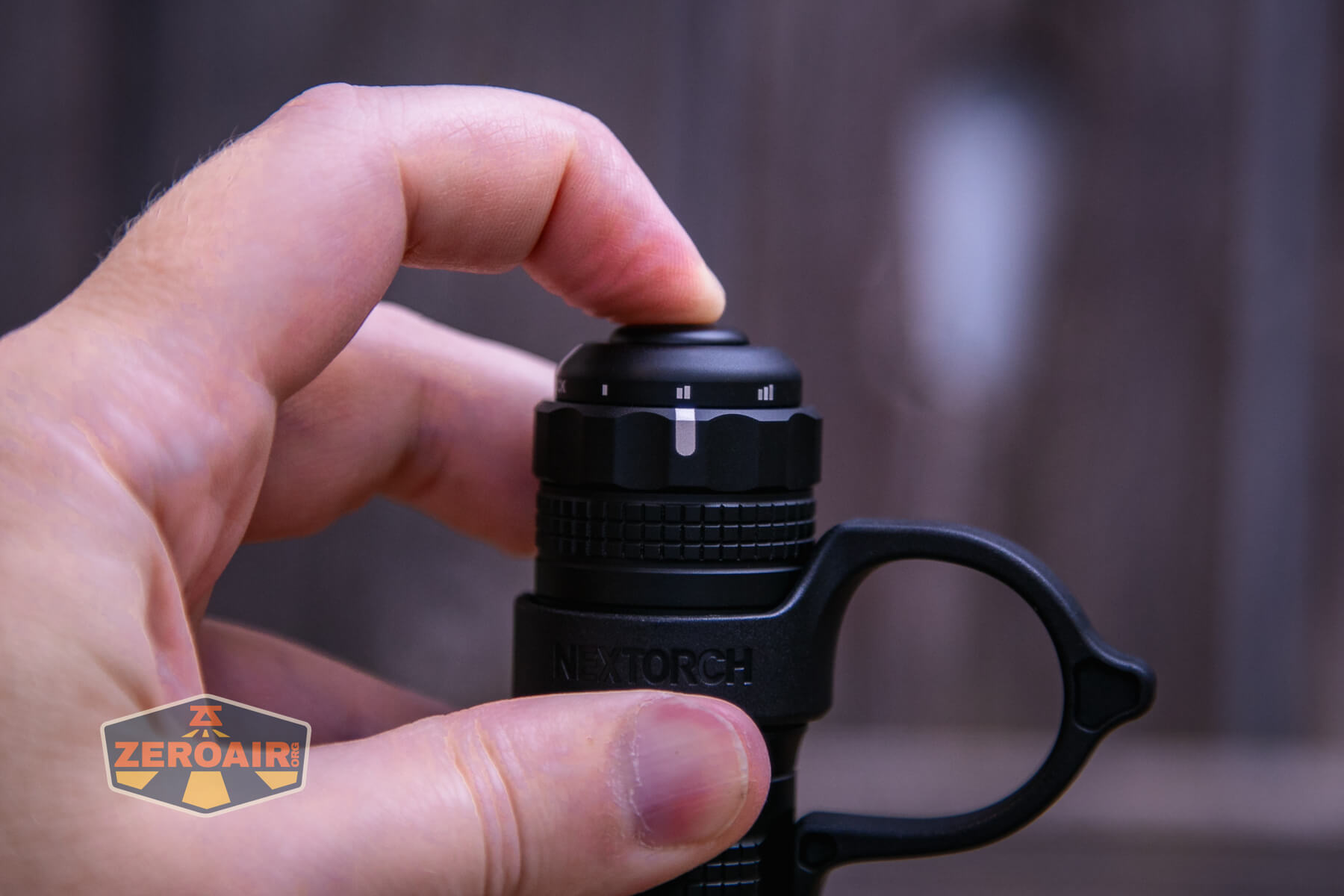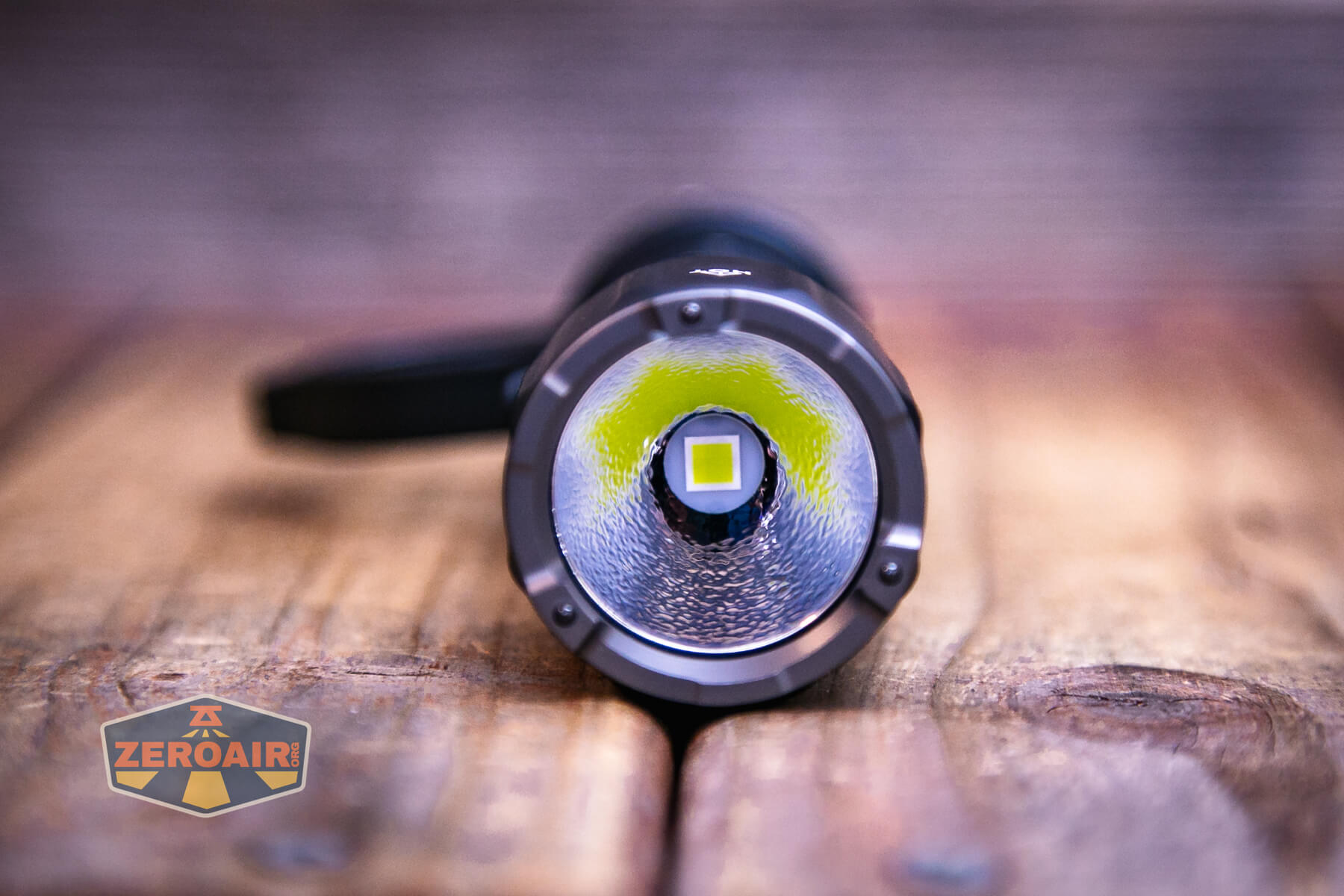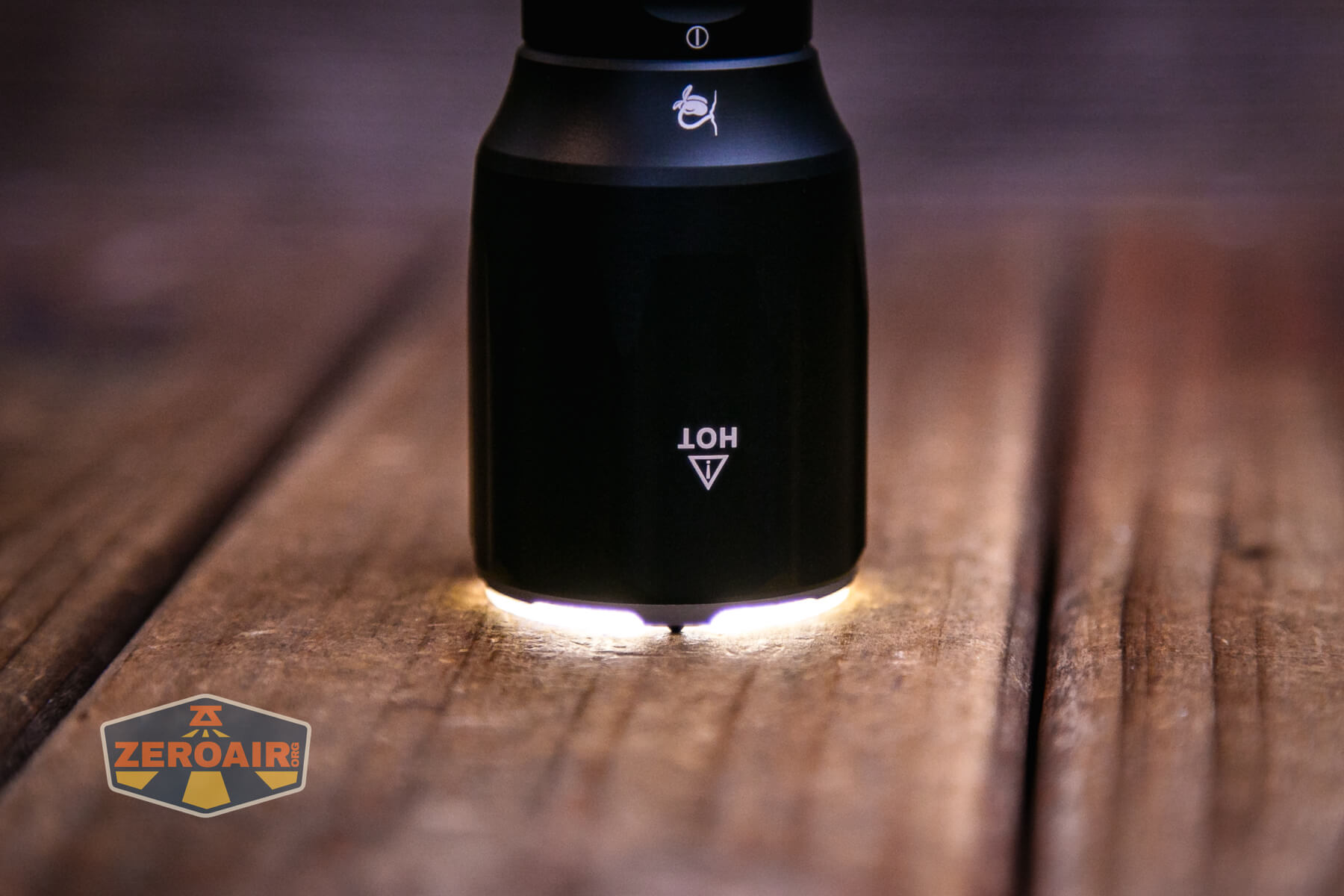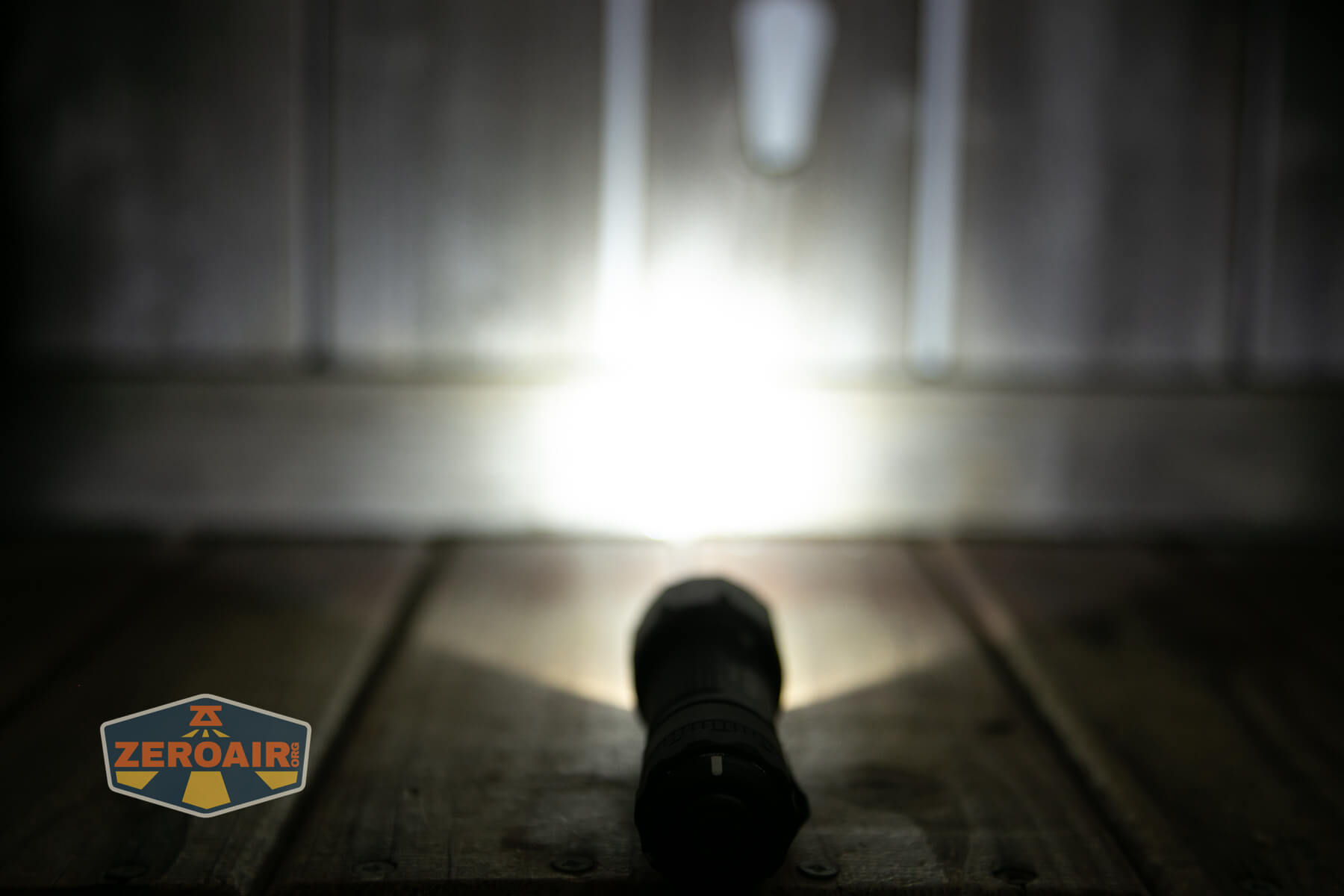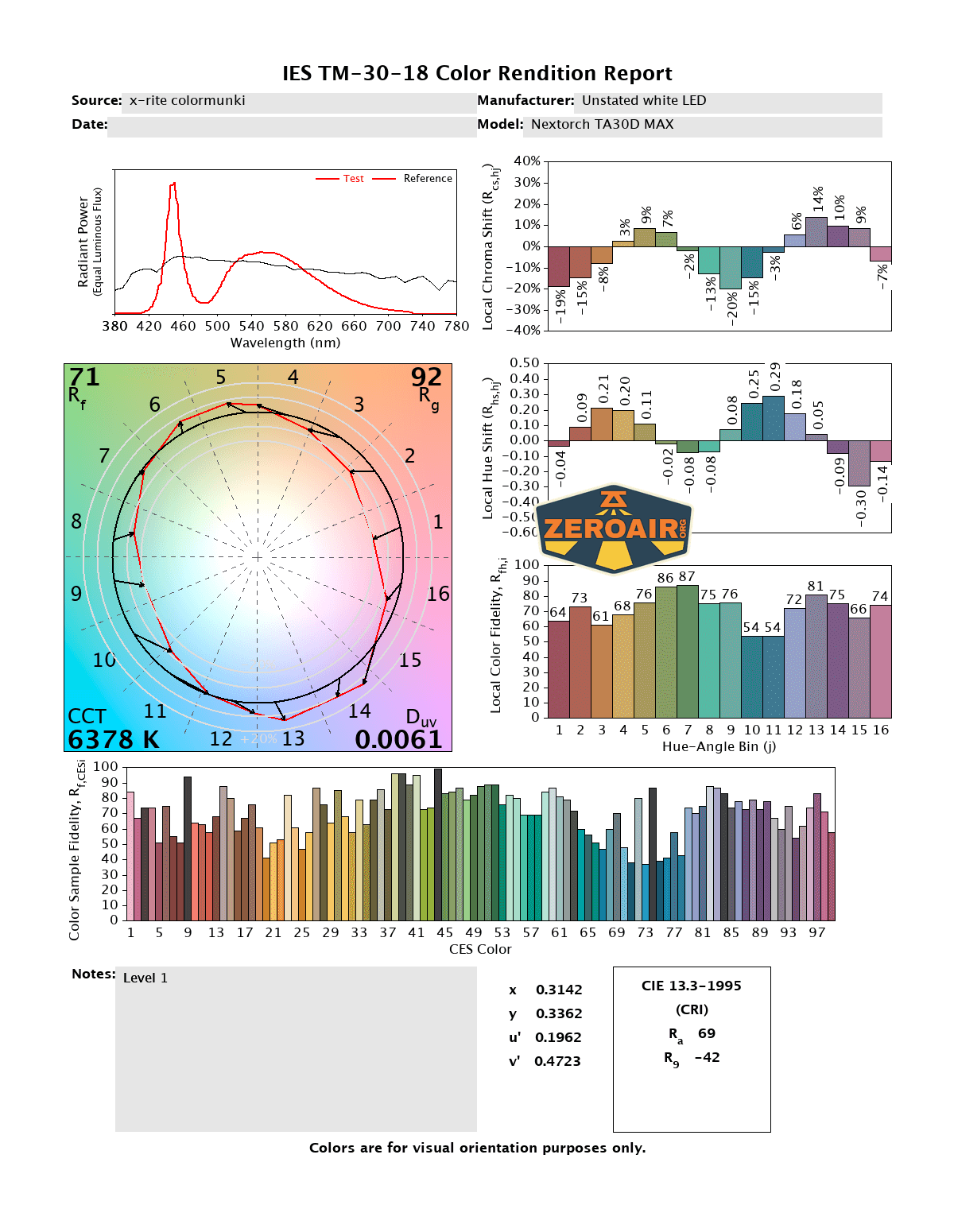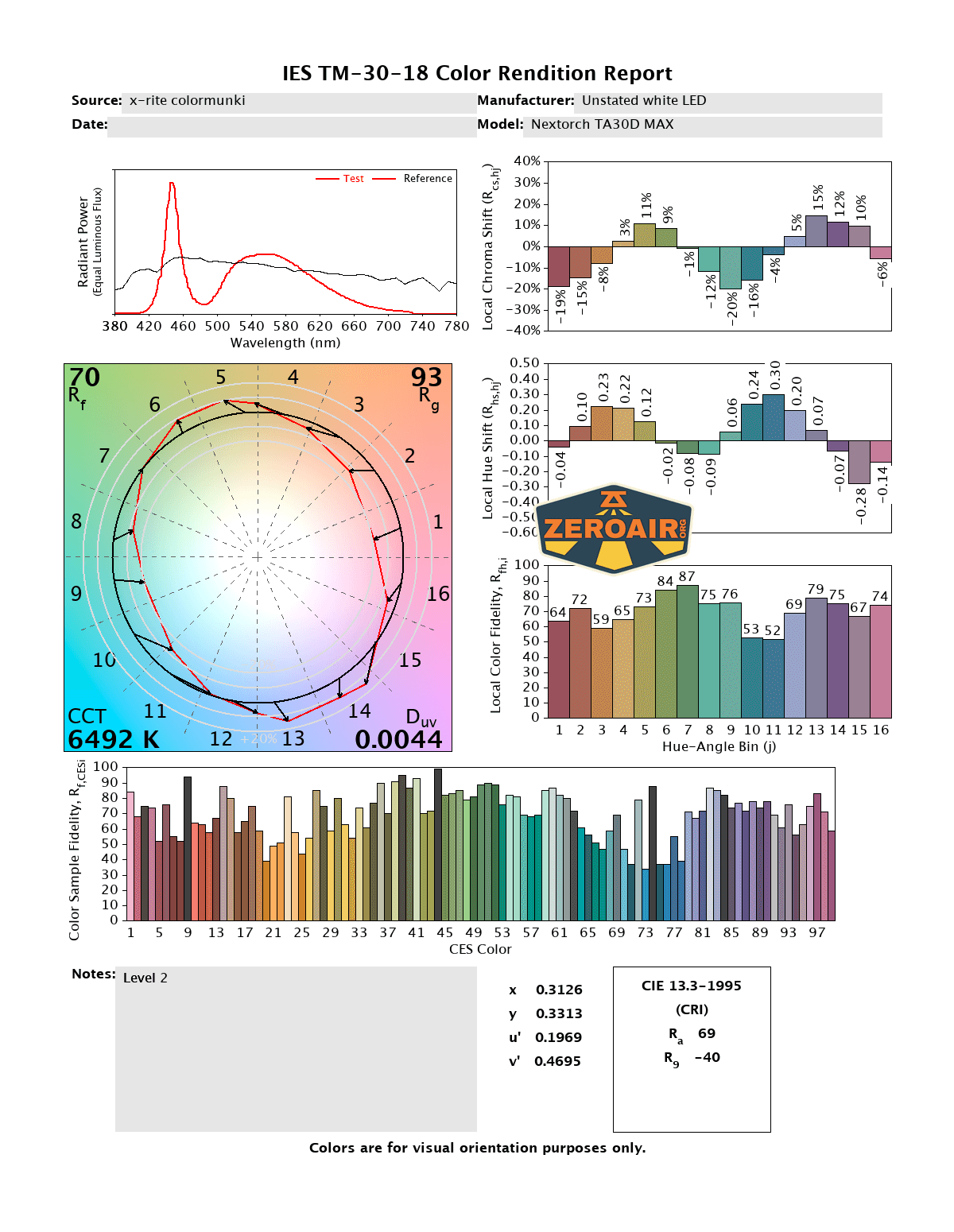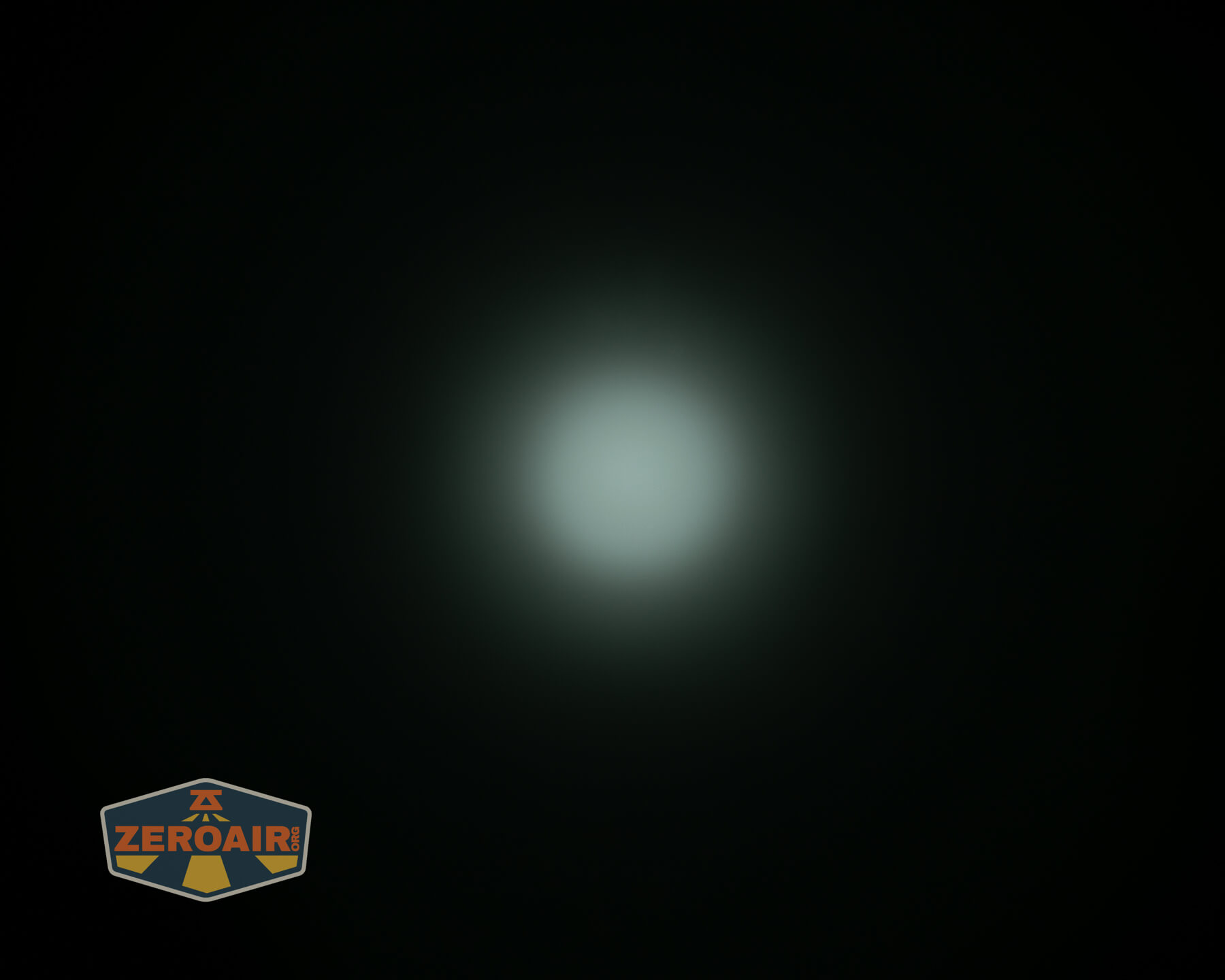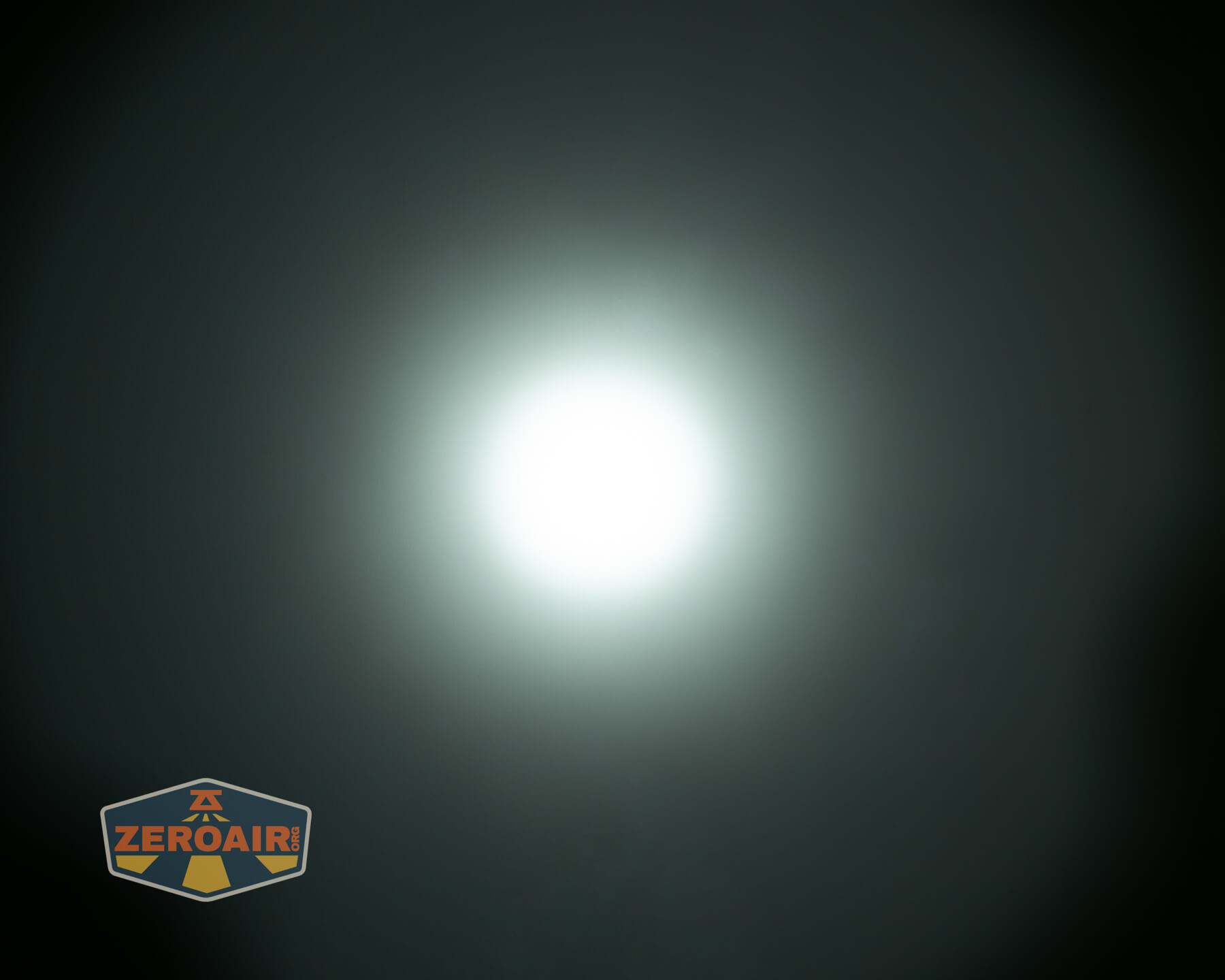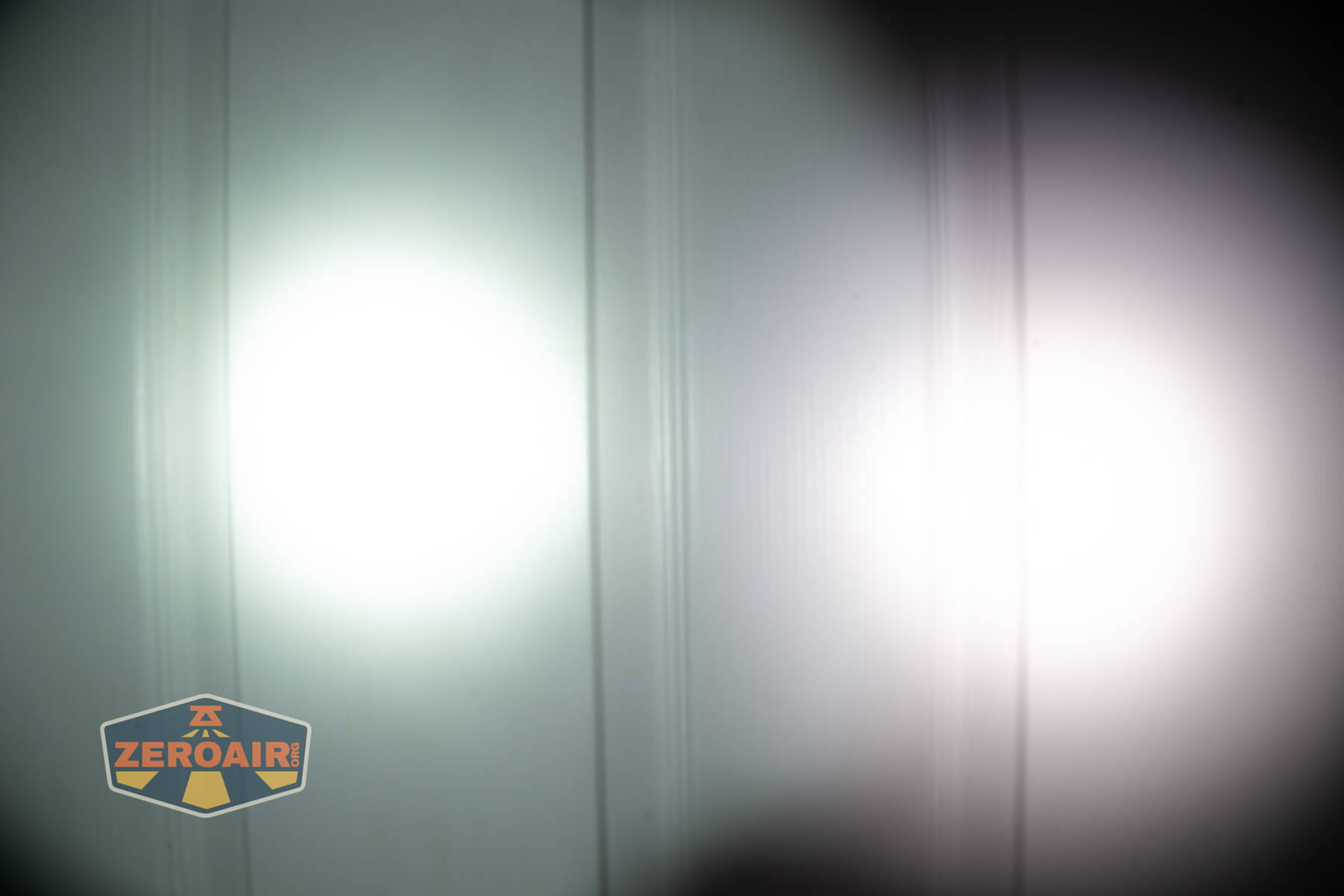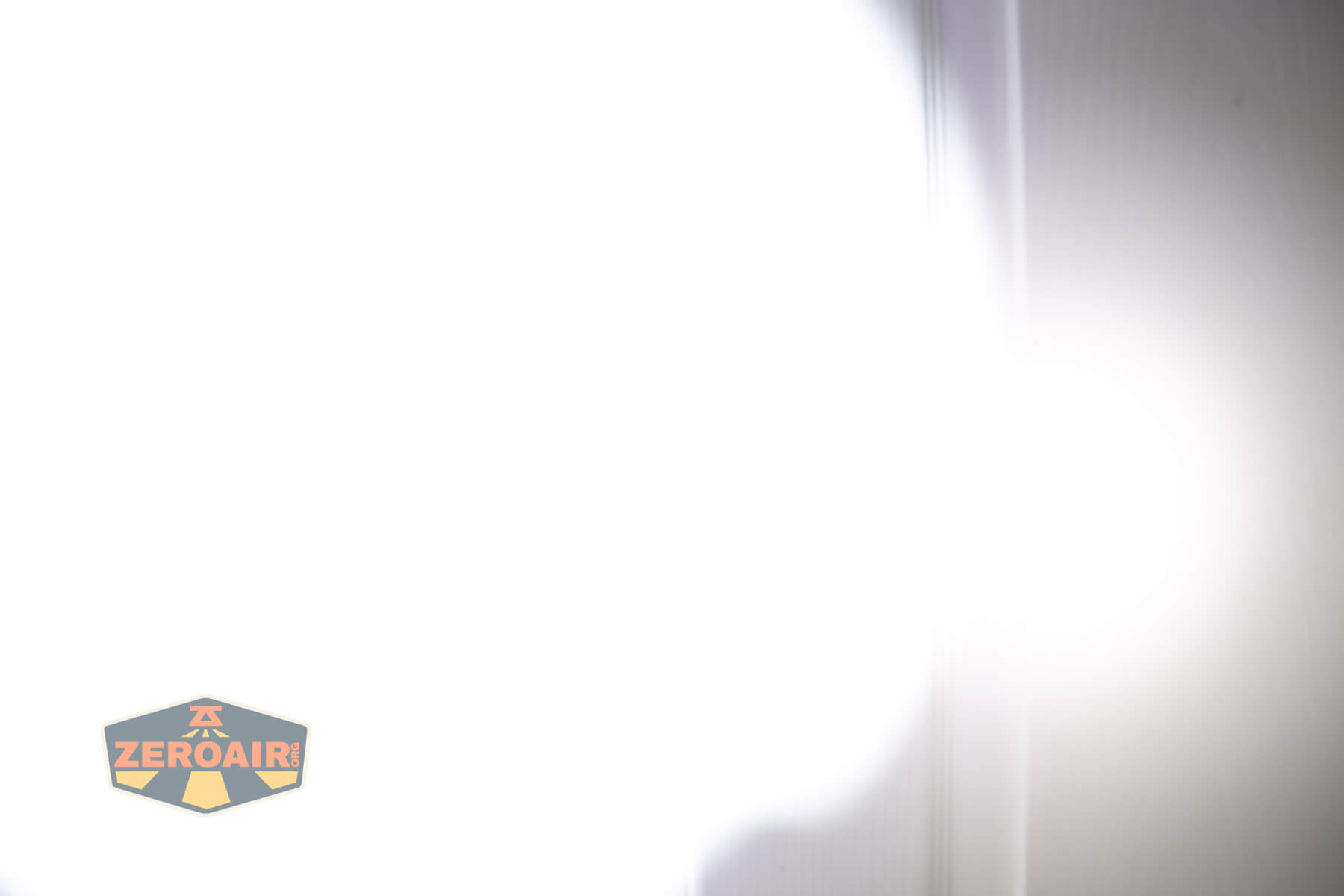Nextorch TA30D MAX One-Step-Strobe Flashlight Review
The Nextorch TA30D MAX One-Step-Strobe flashlight has a proud, indicating tail switch and high output. The rotary output selector is great! Read on!
Official Specs and Features
Here’s a referral link to the Nextorch TA30D MAX One-Step-Strobe flashlight product page.
Versions
There’s just one version of the Nextorch TA30D MAX One-Step-Strobe flashlight. However, a TA30 V2.0 also exists, among other (separate flashlight) versions of this product, such as the TA30C MAX.
Price
The Nextorch TA30D MAX One-Step-Strobe flashlight comes in at $137.99, and that includes the cell you’ll need for running the light.
What’s Included
- Nextorch TA30D MAX One-Step-Strobe flashlight
- Nextorch 5000mAh 21700
- Charging cable (USB to USB-C)
- Lanyard
- Manual etc
Package and Manual
Build Quality and Disassembly
The Nextorch TA30D MAX One-Step-Strobe flashlight is a very nicely built light. It has a nice heft in hand and overall just feels like a good quality light.
The anodizing is great, notably. While it’s not “matte” (like Armytek), it’s also not glossy. There’s a nice grippiness to it, in fact.
The tailcap has a nice beefy spring, and the threads are fairly short. This is really unchanged from the TA30C MAX.
Inside the cell tube, you can see that the head also has a spring.
The head or cell tube does not come off, though. I bet with properly persuasive tools, one could remove the bezel, though.
Size and Comps
Dimensions: 153 mm x 38.4 mm x 28 mm
Weight: 165g (excluding battery)
If the flashlight can headstand, I’ll show it here. If it can tailstand, I’ll also show that here!
Here’s the test light with the venerable Convoy S2+. The version below is a custom laser-engraved Convoy S2+ host by GadgetConnections.com. I did a full post on an engraved orange host right here! Or go straight to GadgetConnections.com to buy your Convoy S2+ now!
Also in the photo above, my Standard Reference Material (SRM) flashlight is the Hanko Machine Works Trident, an 18350 light. While I have not reviewed or tested the Gunner Grip version seen here, I have tested a Hanko Machine Works Trident Total Tesseract in brass. I love the Trident, and it’s a striking contrast to the inexpensive Convoy S2+, another great SRM.
Retention and Carry
The Nextorch TA30D MAX One-Step-Strobe flashlight has a nice friction-fit pocket clip that attaches only to the tail end. This clip isn’t designed as a “deep-carry” clip, but due to the length of the light, it does function that way.
The clip has a nice design, including a stamped logo near the shoulder. And an update for this version of the pocket clip – there’s now a dedicated lanyard hole on the clip’s shoulder!
The clip is keyed to the place you can see below. Because of how the tailcap covers part of this area, the clip is captured. So yes, it’s a friction fit, but it’s also so much better than just a friction fit! I really love the attention that Nextorch pays to this detail!!
With this model, a tactical collar grip is included. It’s all plastic, and it’s good – I don’t operate, but it feels like it will do what it’s supposed to do.
Previously, this grip was a $10 accessory and was a friction-fit clip-on attachment.
A lanyard is also included. You can attach that only through the pocket clip!
Power and Runtime
Nextorch includes a single 21700 cell with the TA30D MAX. It’s a 4800mAh cell and has a button top.
The cell goes into the TA30D MAX opposite to the normal way – in the TA30D MAX, the positive end is toward the tail. In case you forget this, note that there are polarity indicators on the cell tube.
Below are a couple of runtime tests. I’m not observing the claimed 4000 lumens, but I’d have been surprised if that was achieved anyway. What we do see is a fairly quick (but not “abusive”) stepdown. By “not abusive,” I mean it doesn’t seem like Nextorch is gaming the claim system. Around 1 minute at the very bright output is respectable.
The temperature lines in these charts are included as general context, not precise measurements. The values represent the range (min to max) during testing, but should not be taken as exact readings. Temperature sensors are attached however feasible and not always on the bezel or hottest spot (assuming that can even be clearly defined). Even with ideal placement, too many variables affect temperature to definitively state a specific max value.
Charging
While the TA30D Max itself does not have built-in charging, the included 21700 cell does. There’s a USB-C charging port right there on the positive terminal.
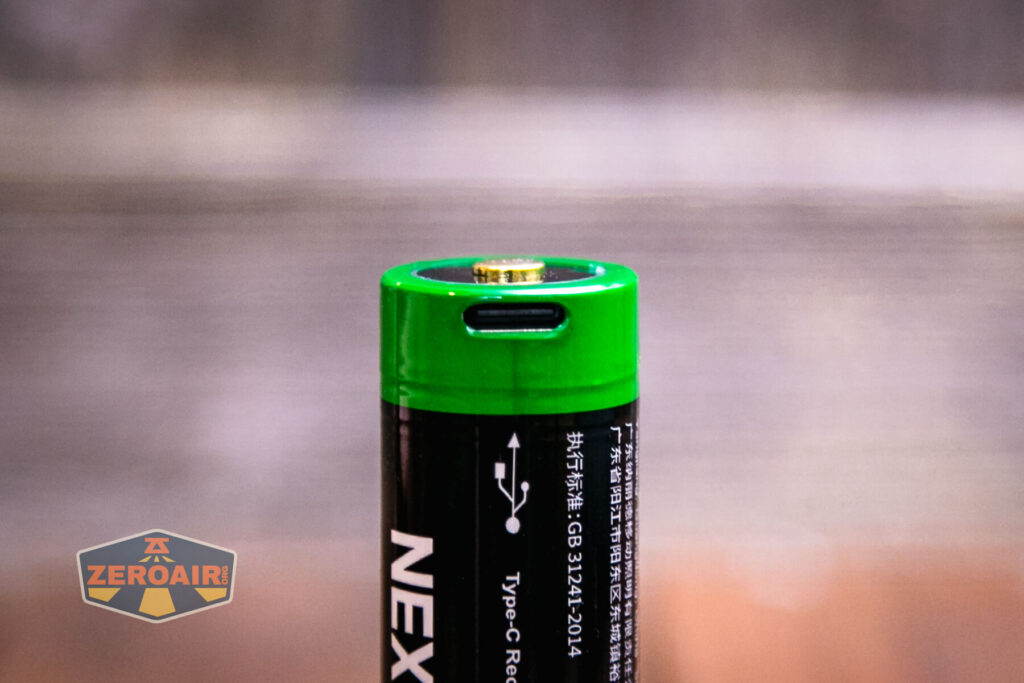
Also not shown, but there’s a tiny indicating LED near the button, too. Red when charging and blue when charging has completed.
A USB to USB-C charging cable is included. Note the touch of “Nextorch green” there on both ends of the cable. I really like that! Small touch, but it (again) points out that Nextorch does things right!
The charging is good and finishes in under 3 hours. USB to C and C to C both work fine.
Modes and Currents
| Mode | Mode Claimed Output (lm) | Claimed Runtime | Measured Lumens |
|---|---|---|---|
| High | 4000 | 2h45m | 3219 (0s) 3219 (30s) |
| Medium | 550 | 5h | 487 (0s) 487 (30s) |
| Low | 70 | 40h | 62 |
Pulse Width Modulation
PWM is not observed on any of the three modes of the TA30D MAX One-Step-Strobe flashlight.
Click here to see a “baseline” – a chart with almost no light hitting the sensor.
Then there’s the Ultrafire WF-602C flashlight, which has some of the worst PWM I’ve seen. It’s so bad that I used a post about it to explain PWM! Here are multiple timescales (10ms, 5ms, 2ms, 1ms, 0.5ms, 0.2ms) to make comparing this “worst” PWM light to the test light easier. That post also explains why I didn’t test the WF-602C at the usual 50us scale.
User Interface and Operation
There’s one switch on the Nextorch TA30D MAX One-Step-Strobe flashlight. It’s a tail e-switch and functions much like a forward mechanical clicky. The switch, however, doesn’t click. That plays into how “one-step” strobe the light is! Below, you can see the switch indicator ring lit in blue.
The switch battery indication is as follows:
Blue: 75-100%
Blue flashing: 50-75%
Red: 25-50%
Red flashing: 0-25%
Aside from that actual switch, there’s a rotary control. This rotary control can be put in five positions. “TAC” is the “most off” position – in this setting, strobe is the response when the switch is pressed. This is “one-step strobe.” Next is LOCK.
The other three positions are steady states. Rotate the dial to “I”, “II”, “III”, or “Strobe” and you get Low, Medium, High, or Strobe, respectively. Those all work without switch presses too – in fact, in any of those modes, pressing the switch causes the light to function as if it’s in TAC mode.
This switch is great. It’s pleasantly springy and very responsive.
Here’s a user interface table!
| State | Action | Result |
|---|---|---|
| Any | Tap Switch | High |
| Any | Hold switch (deeply) | Strobe |
| Rotary in “TAC” | Rotate Rotary counter clockwise | Increase output through LOCK, I, II, III |
| Rotary in “III” | Rotate Rotary clockwise | Decrease output from III, II, I |
| On | Turn light off (various ways) | Battery indicator^ |
| LOCK | Tap switch | Battery indicator^ |
^ Battery indicator described above.
LED and Beam
Nextorch doesn’t tell us what this emitter is. I also haven’t labeled it, but with the CRI tests below, we can at least get important information. That emitter is coupled with a deep and textured reflector. Below, you can also see the glass-breaking ball bearings in the bezel. I think that the bezel is probably stainless steel, too, which is a good choice.
LED Color Report (CRI and CCT)
CCT ranges from around 6400K (cool white) all the way up to around 7200K (very cool white), and the CRI is low, at around 70. None of those should really be surprises – it’s very usual for a tactical light to be cool white and low CRI, namely because they’re usually as bright as possible, and low CRI high CCT lights output the most light (comparatively).
CCT (Correlated Color Temperature) refers to the measurement of the color appearance of light, expressed in Kelvins (K), which indicates whether the light is warm (yellowish) or cool (bluish). A lower CCT (below 3000K) is considered warm light, while a higher CCT (above 5000K) gives cooler, bluish light.
CRI (Color Rendering Index) is a measure of how accurately a light source renders colors in comparison to natural sunlight. Scored on a scale from 0 to 100, higher CRI values indicate that colors appear more true to life and vibrant, similar to how they would look under the sun.
Beamshots
These beamshots always have the following settings: f8, ISO100, 0.3s shutter, and manual 5000K exposure. These photos are taken at floor level, and the beam hits the ceiling around 9 feet away.
Tint vs BLF-348 (KillzoneFlashlights.com 219b version) (affiliate link)
I keep the test flashlight on the left and the BLF-348 reference flashlight on the right. These photos are taken around 18 inches from the door.
I compare everything to the KillzoneFlashlights.com 219b BLF-348 because it’s inexpensive and has the best tint!
Summary and Conclusion
The Nextorch TA30D MAX One-Step-Strobe flashlight follows in the line of high-quality lights by Nextorch. I appreciate the user interface – rotary dials are neat, for sure! Output is great, even if not quite 4000 lumens. I really like the switch, and the indicator on that switch is great, too. Again, the Nextorch build quality is among the best! I don’t love that the cell is opposite to the normal way, and I could use four steady modes instead of just three. Also, price creep on this one – at $138, there’s a fair bit of competition!
The Big Table
| Nextorch TA30D MAX One-Step-Strobe flashlight | |
|---|---|
| Emitter: | Unstated white LED |
| Price in USD at publication time: | $137.99 |
| Cell: | 1×21700 |
| Runtime Graphs | |
| LVP? | No |
| Switch Type: | E-switch |
| Quiescent Current (mA): | ? |
| On-Board Charging? | Yes |
| Charge Port Type: | USB-C (on cell) |
| Charge Graph | |
| Power off Charge Port | No |
| Claimed Lumens (lm) | 4000 |
| Measured Lumens (at 30s) | 3219 (80.5% of claim)^ |
| Candela per Lumen | 19.2 |
| Claimed Throw (m) | 450 |
| Candela (Calculated) in cd (at 30s) | 1750lux @ 5.777m = 58404cd |
| Throw (Calculated) (m) | 483.3 (107.4% of claim)^ |
| Claimed CCT | – |
| Measured CCT Range (K) | 6400-7200 Kelvin |
| Item provided for review by: | Nextorch |
| All my Nextorch reviews! | |
^ Measurement disclaimer: Testing flashlights is my hobby. I use hobbyist-level equipment for testing, including some I made myself. Try not to get buried in the details of manufacturer specifications versus measurements recorded here; A certain amount of difference (say, 10 or 15%) is perfectly reasonable.
What I like
- Great user interface
- High output
- Excellent build quality
- Circle battery indicator is much more fun than just a dot!
- Captured pocket clip
What I don’t like
- No low voltage protection
- High CCT and low CRI
- Just three steady modes (probably fine for tactical users; I’d like 4 modes.)
- Price creep
Notes
- This content originally appeared at zeroair.org. Please visit there for the best experience!
- Please use my Amazon.com referral link to help support zeroair.org!
- Please support me on Patreon! I deeply appreciate your support!
